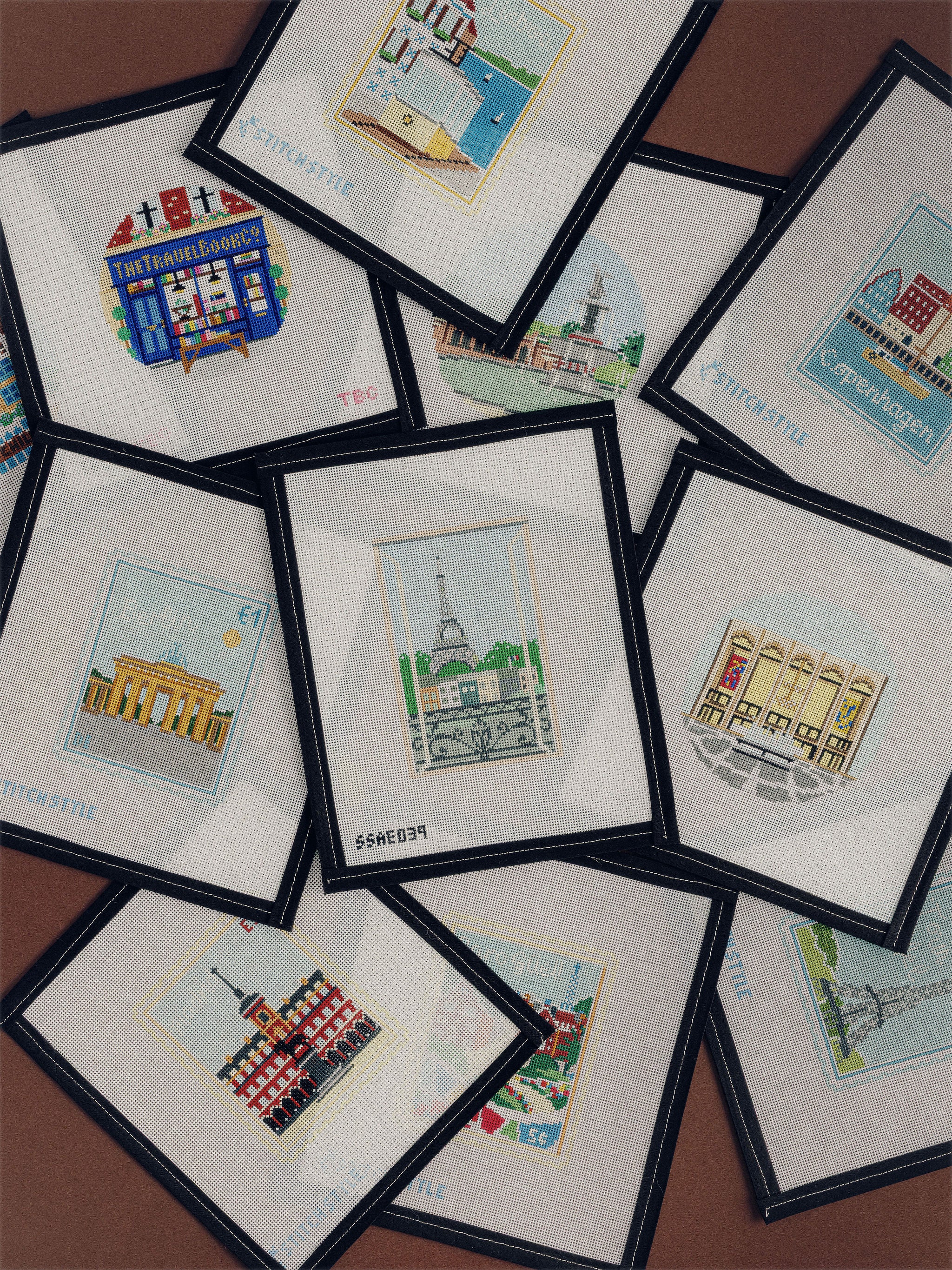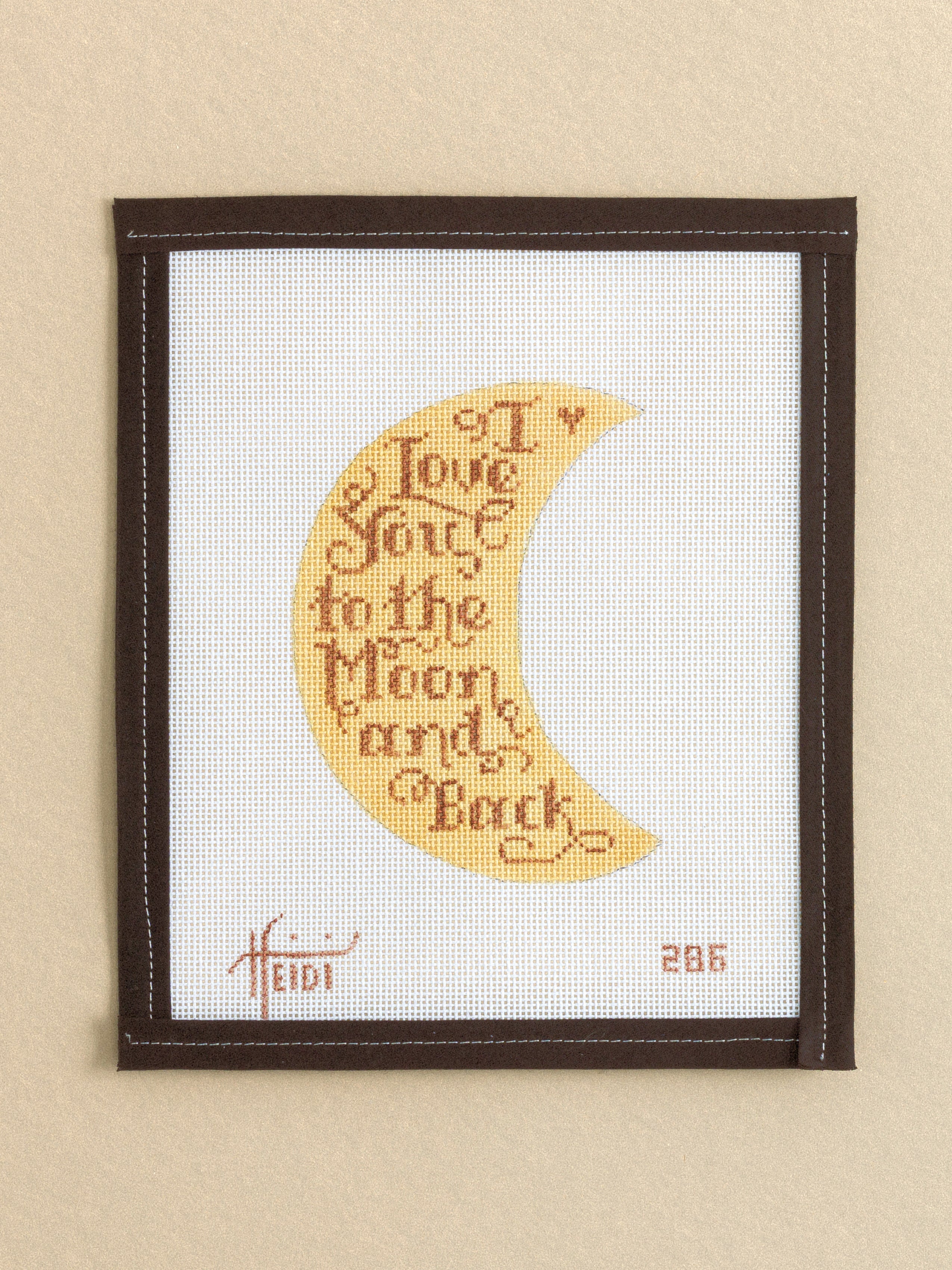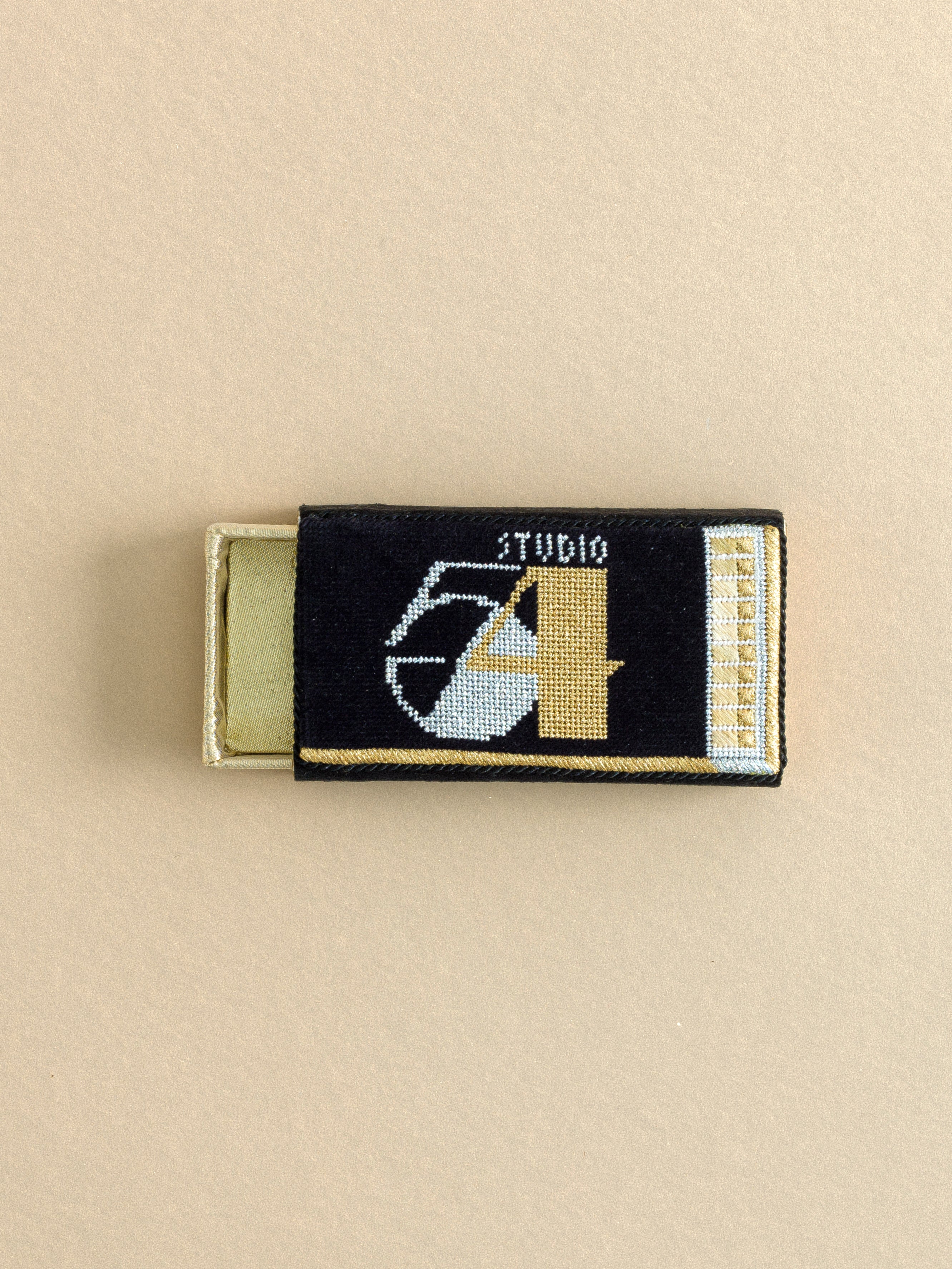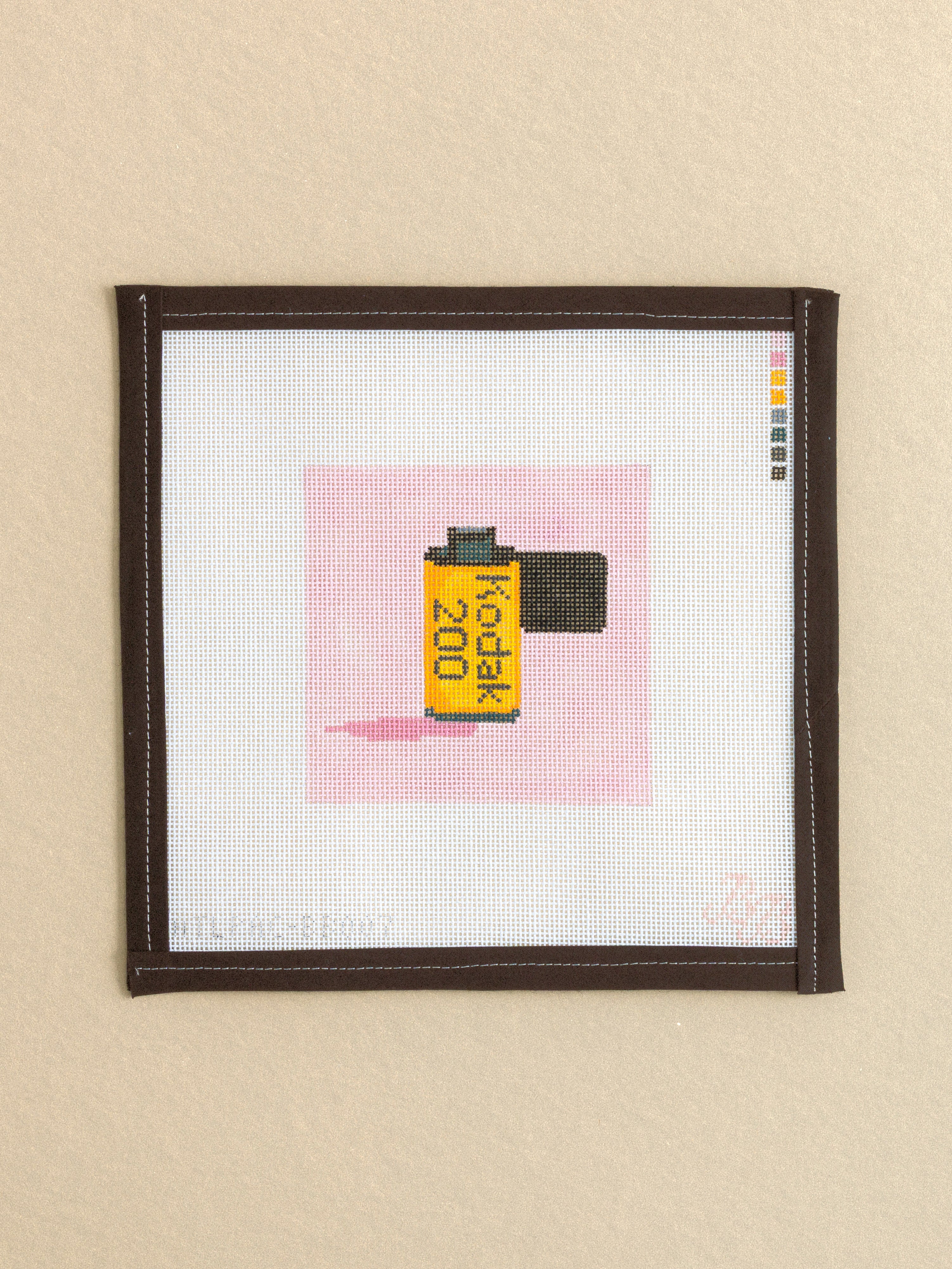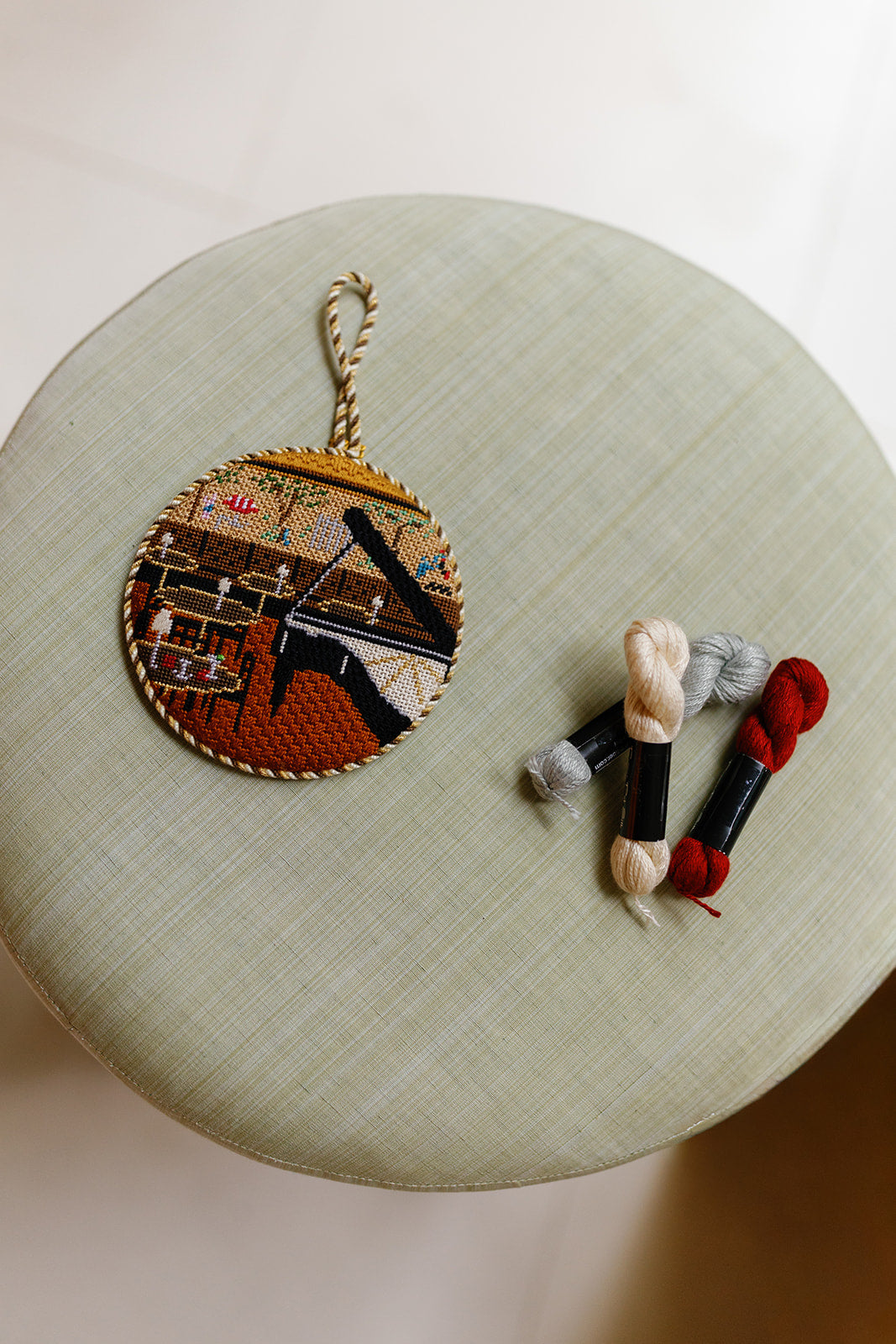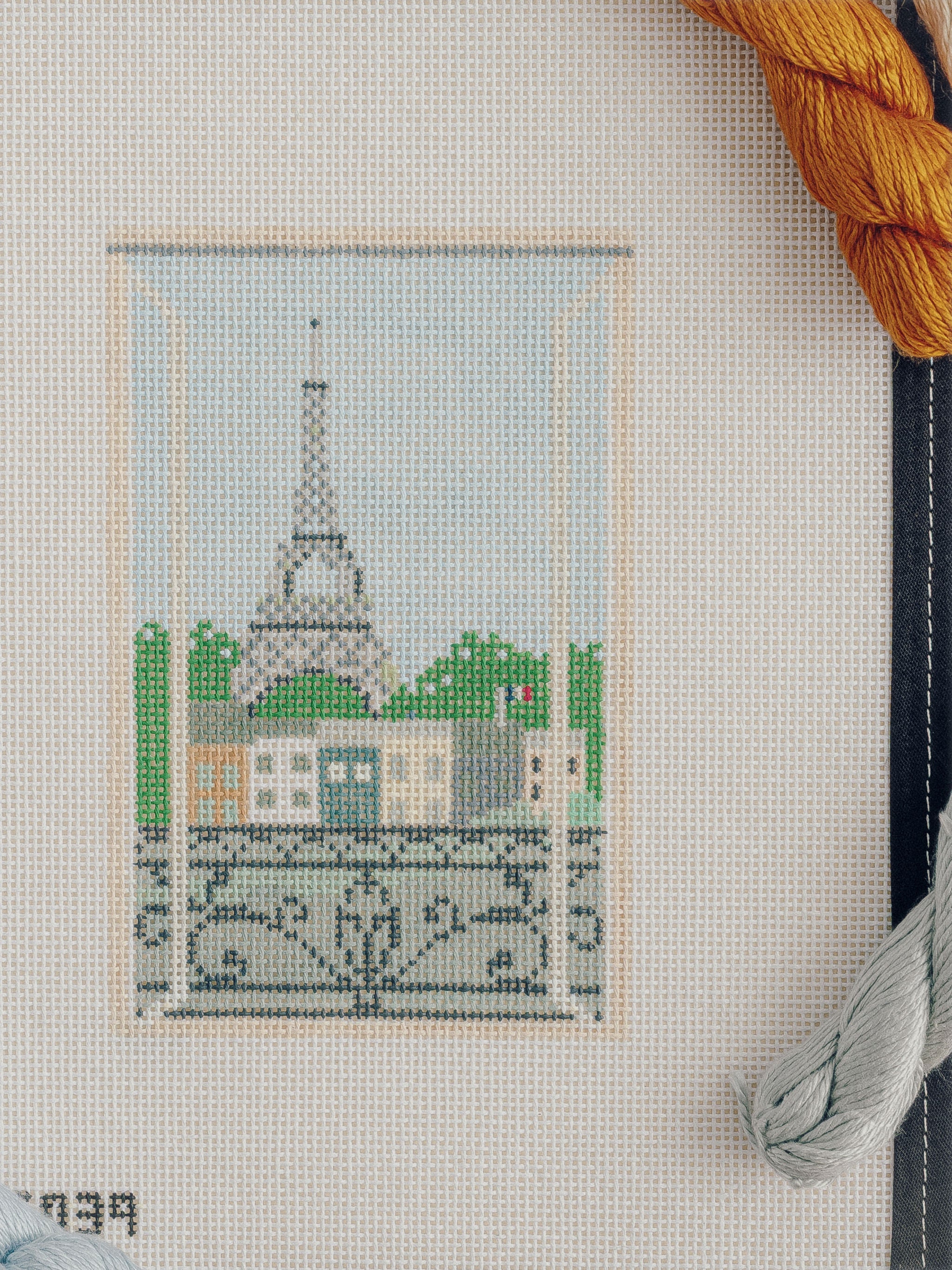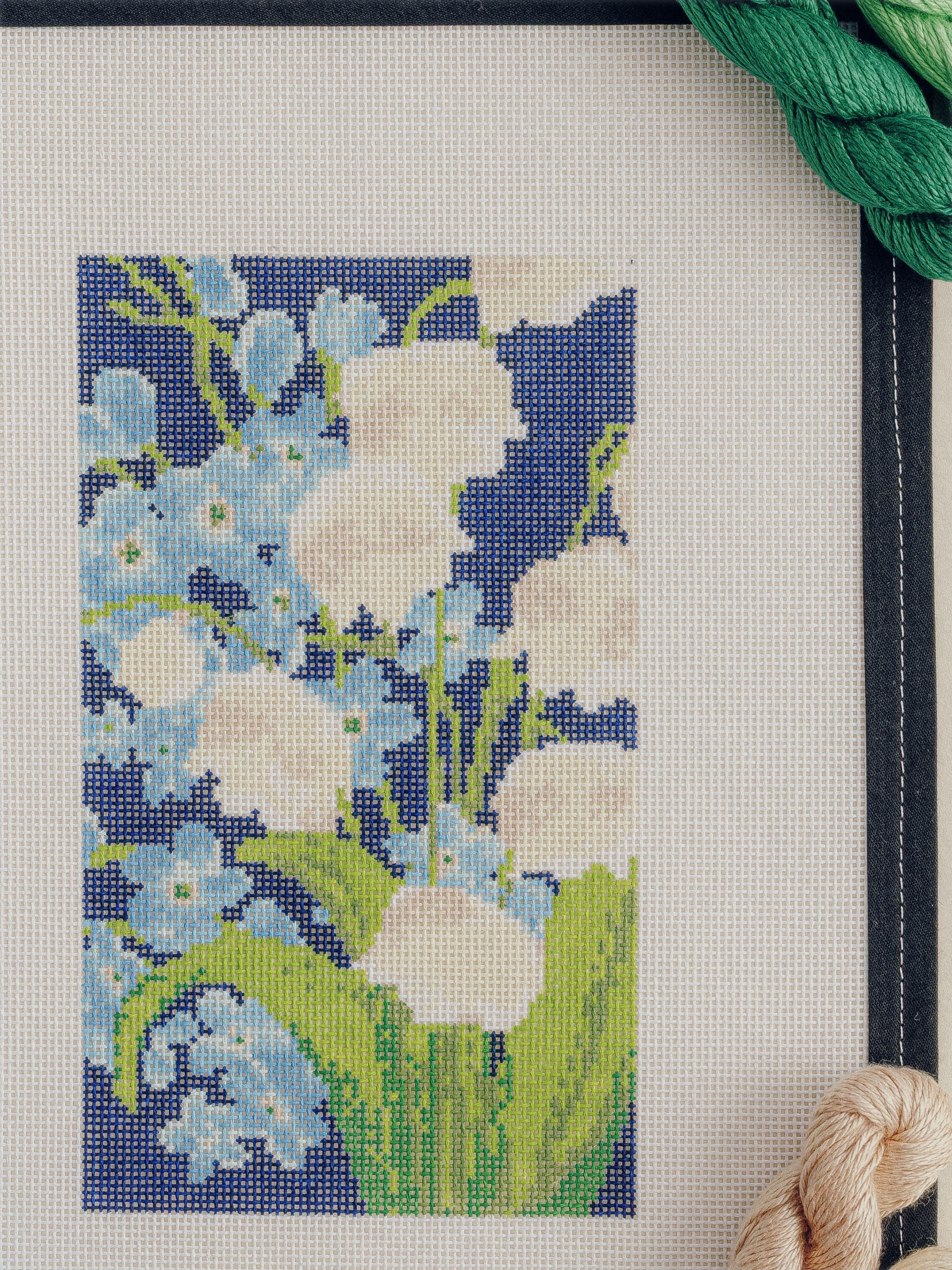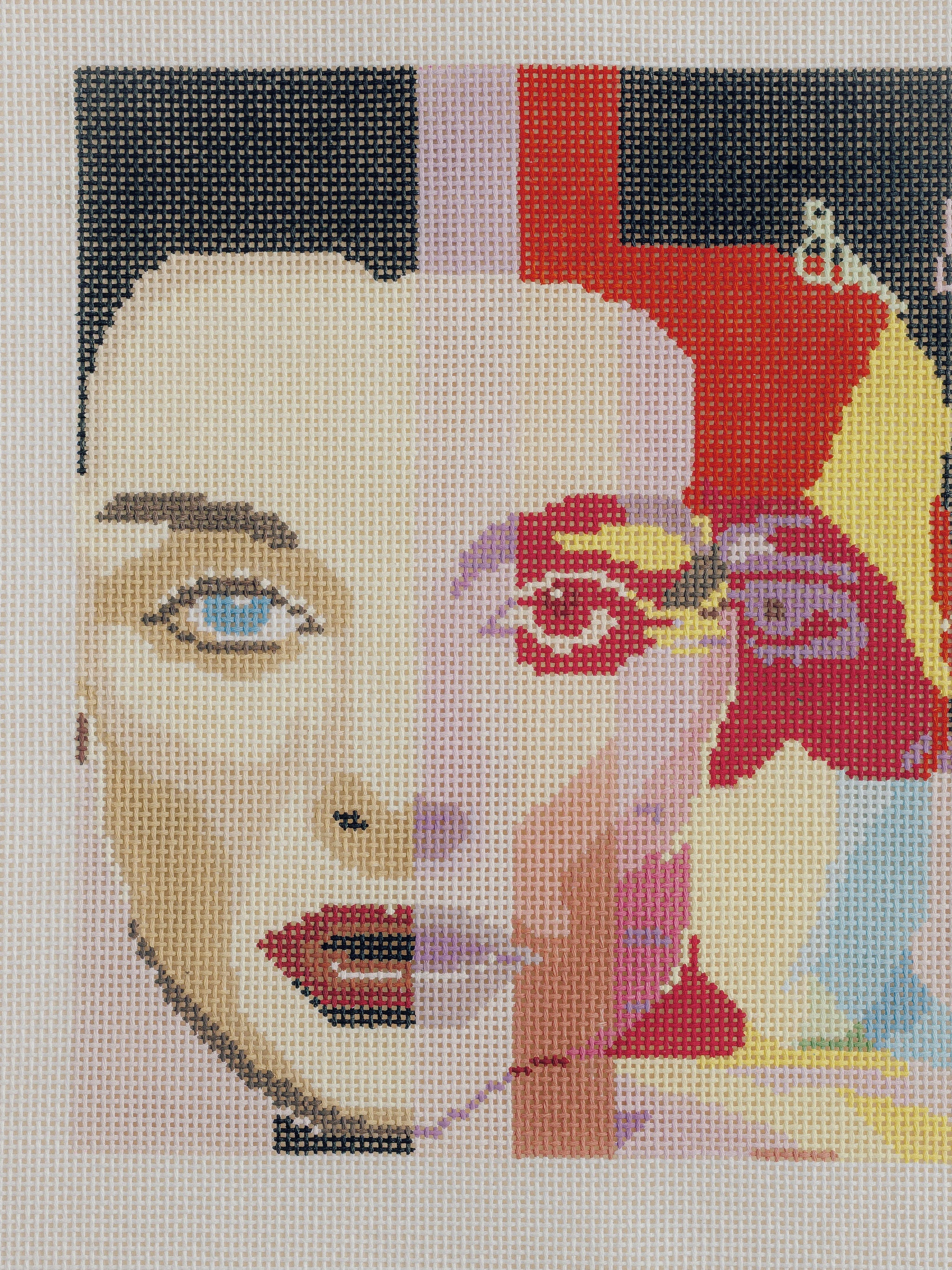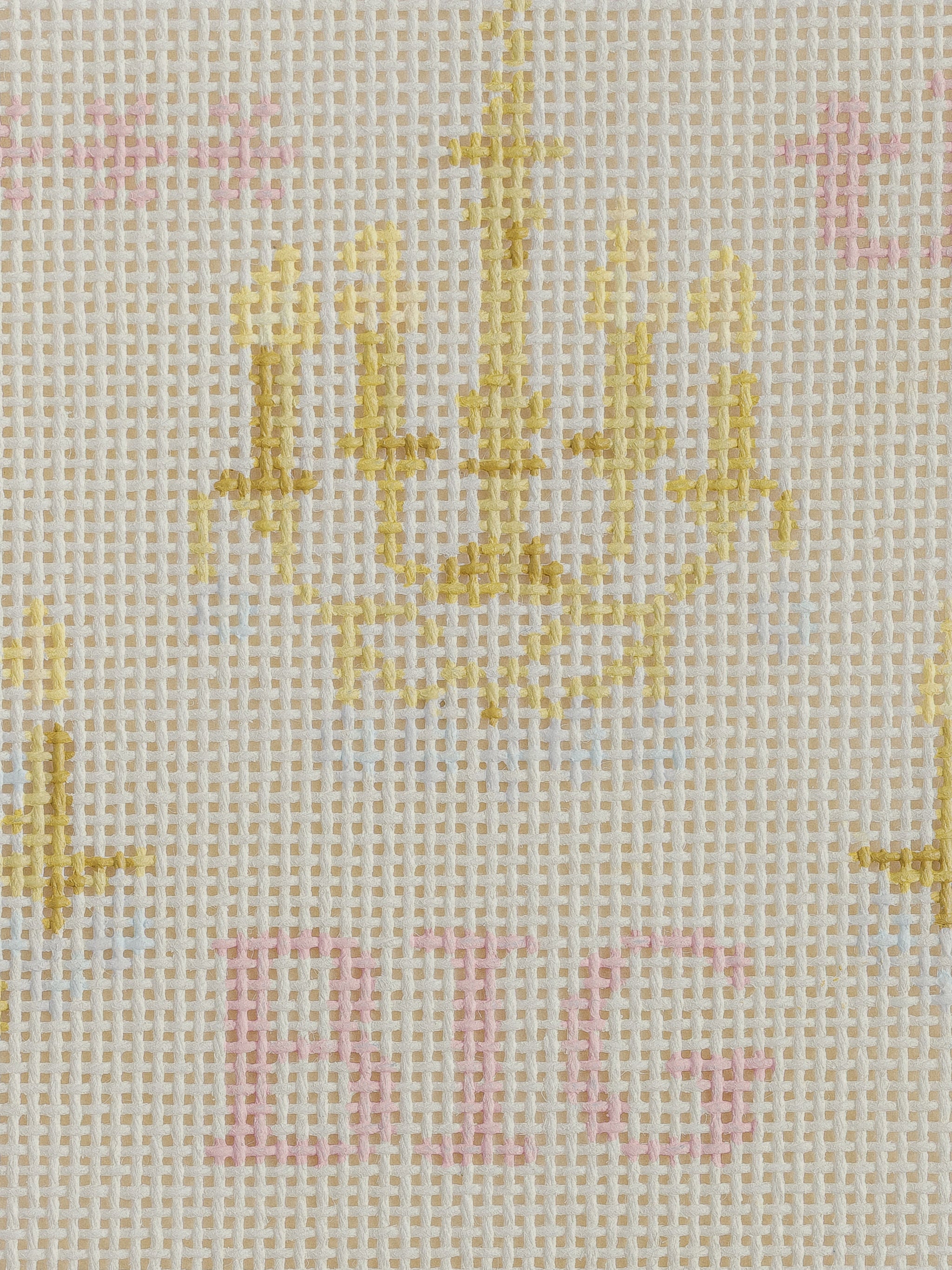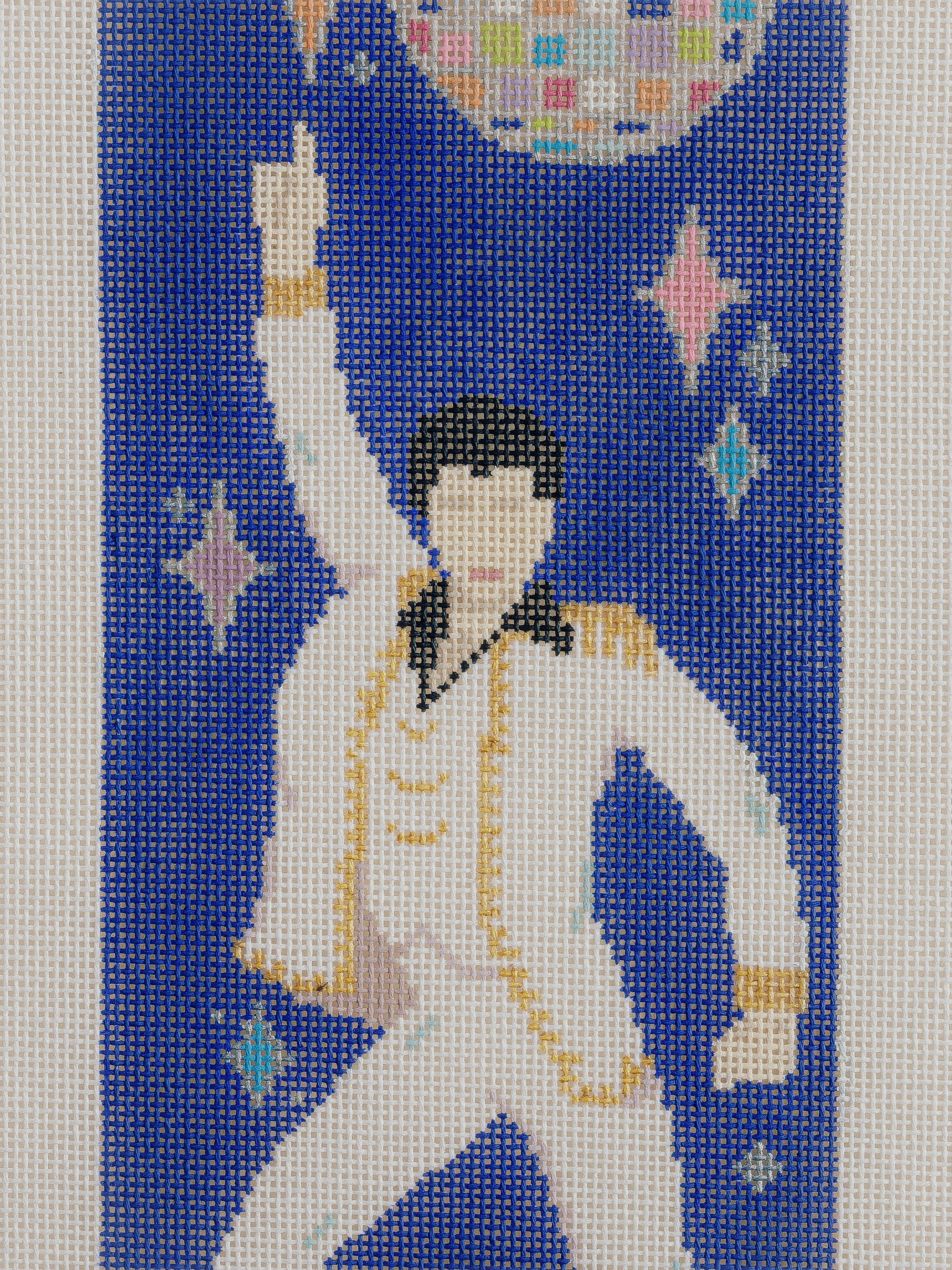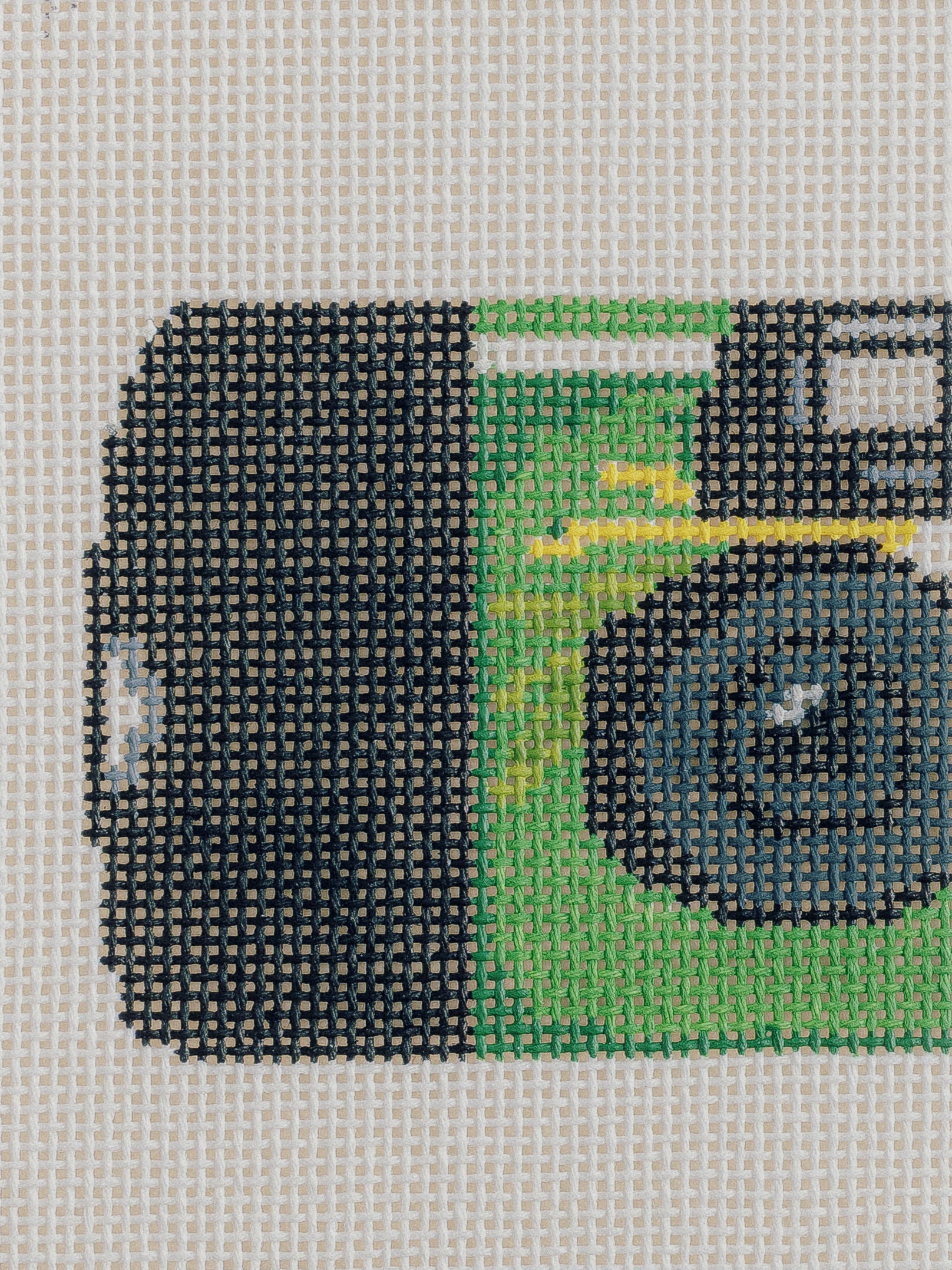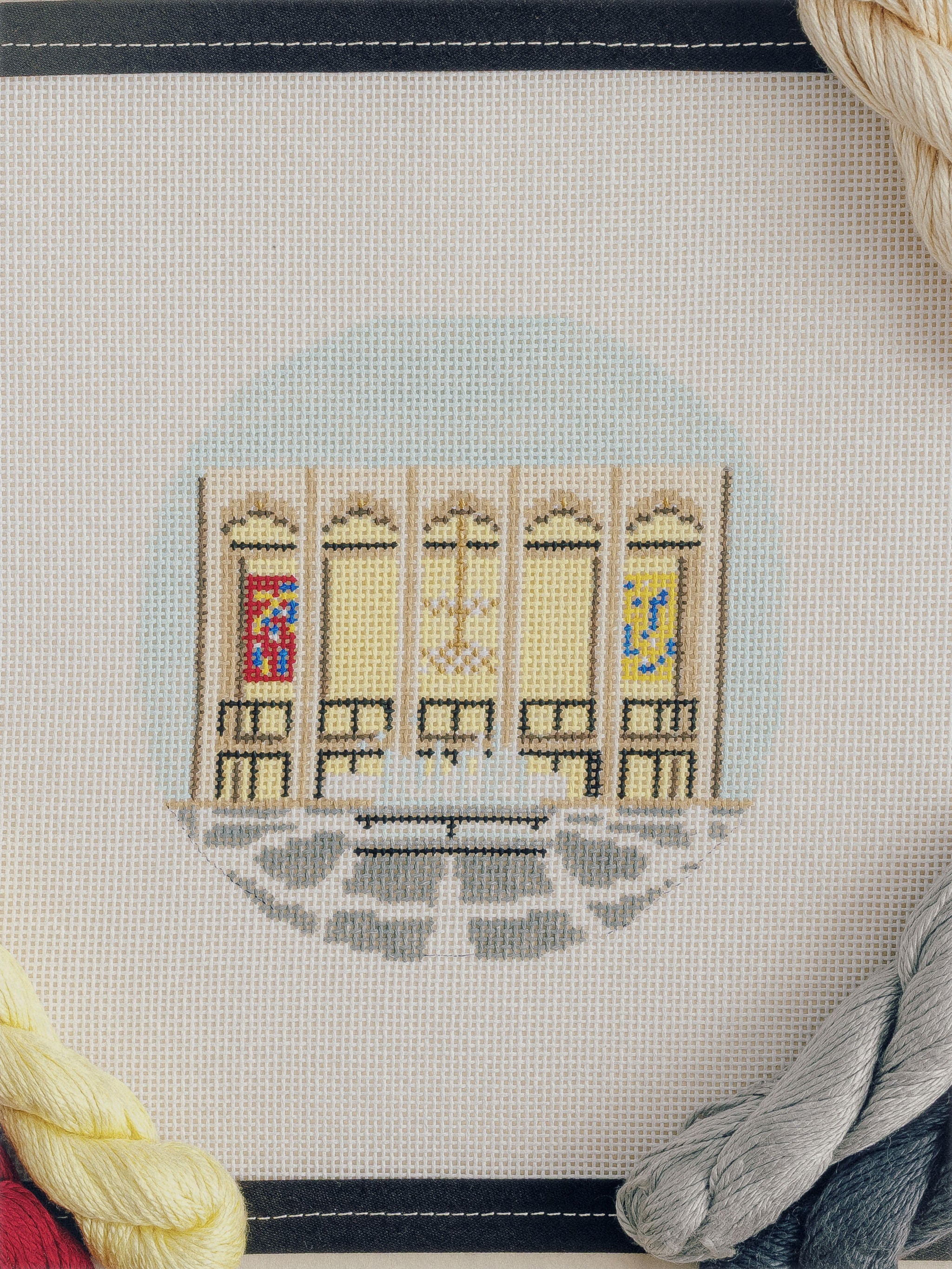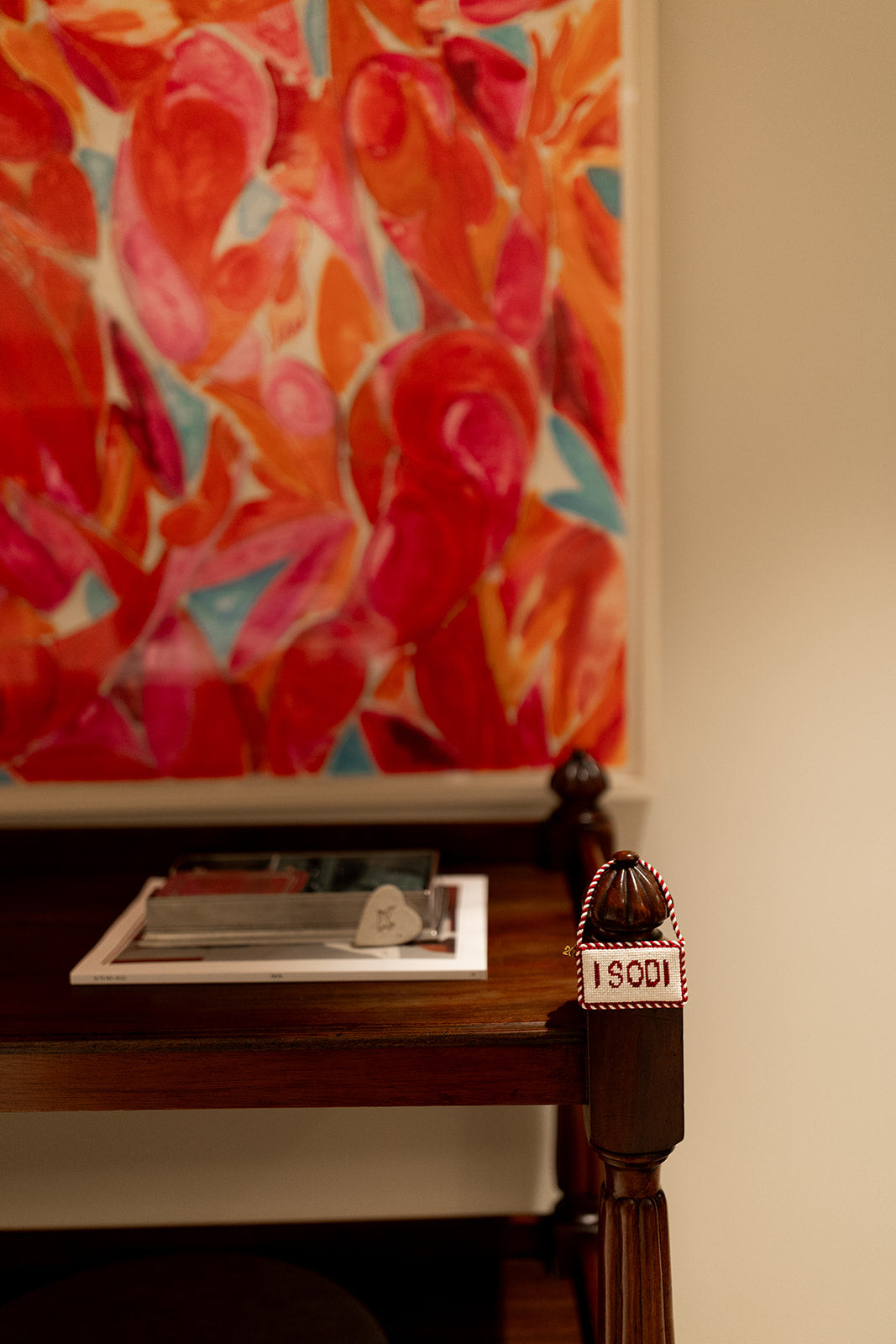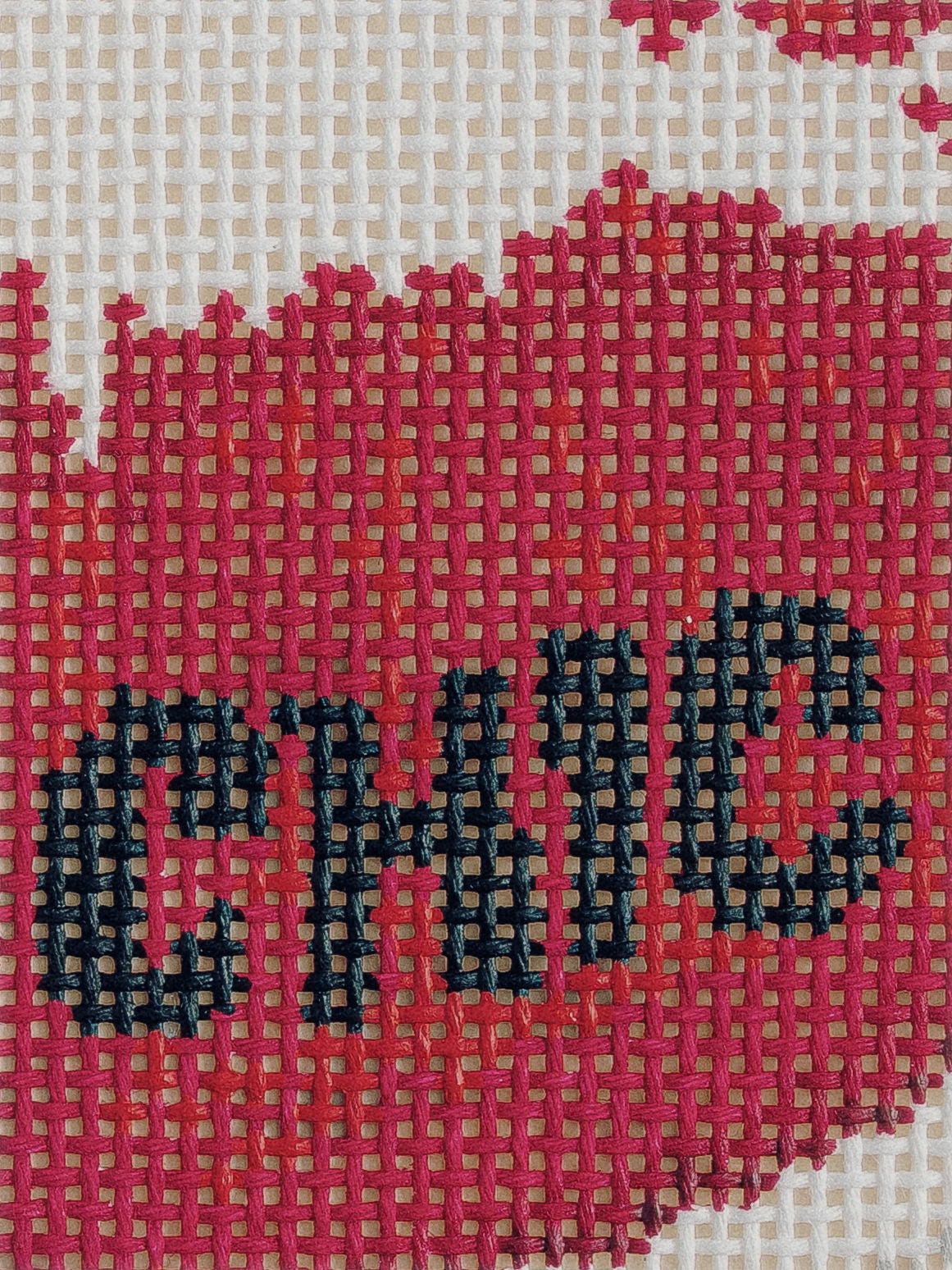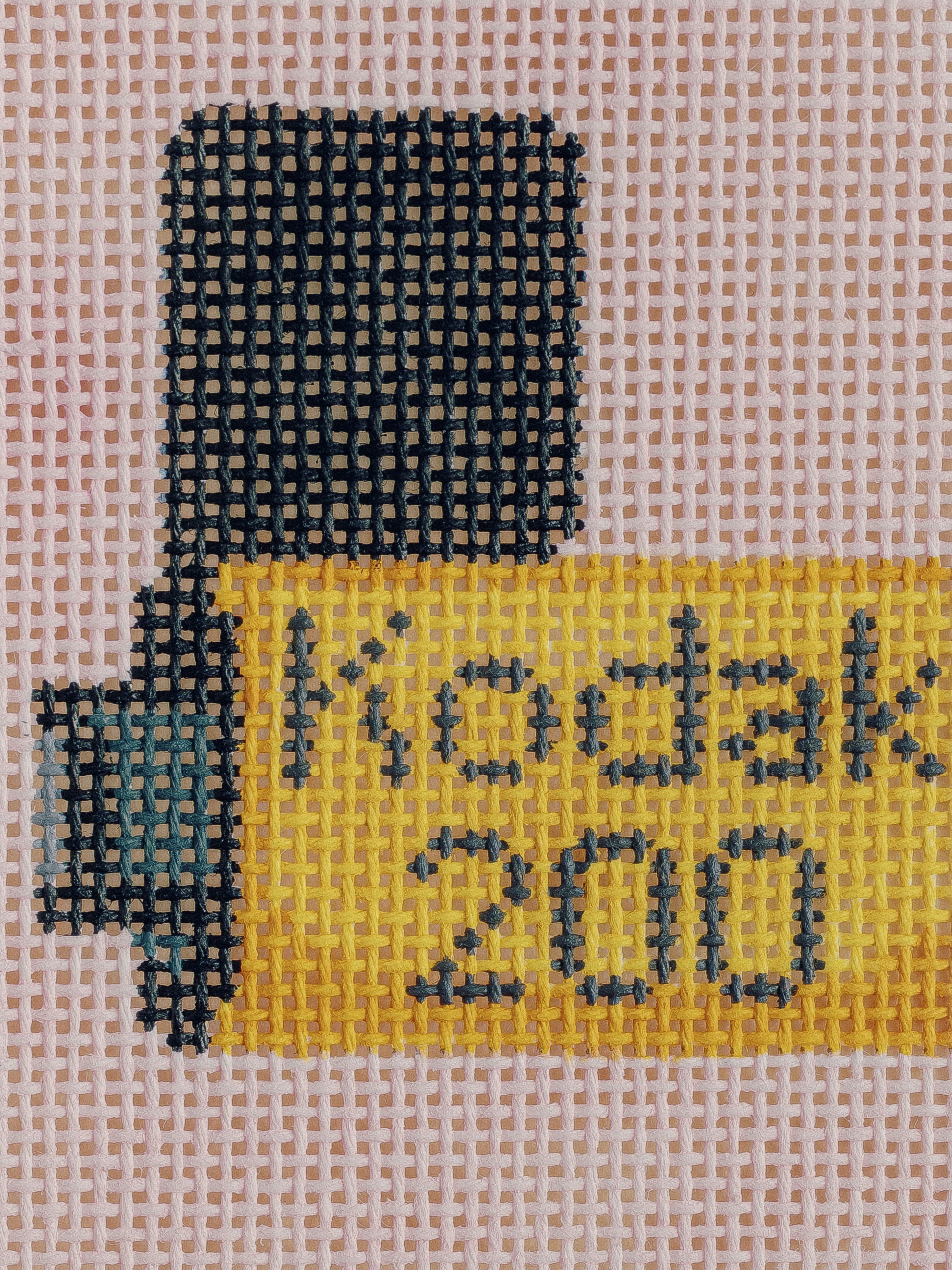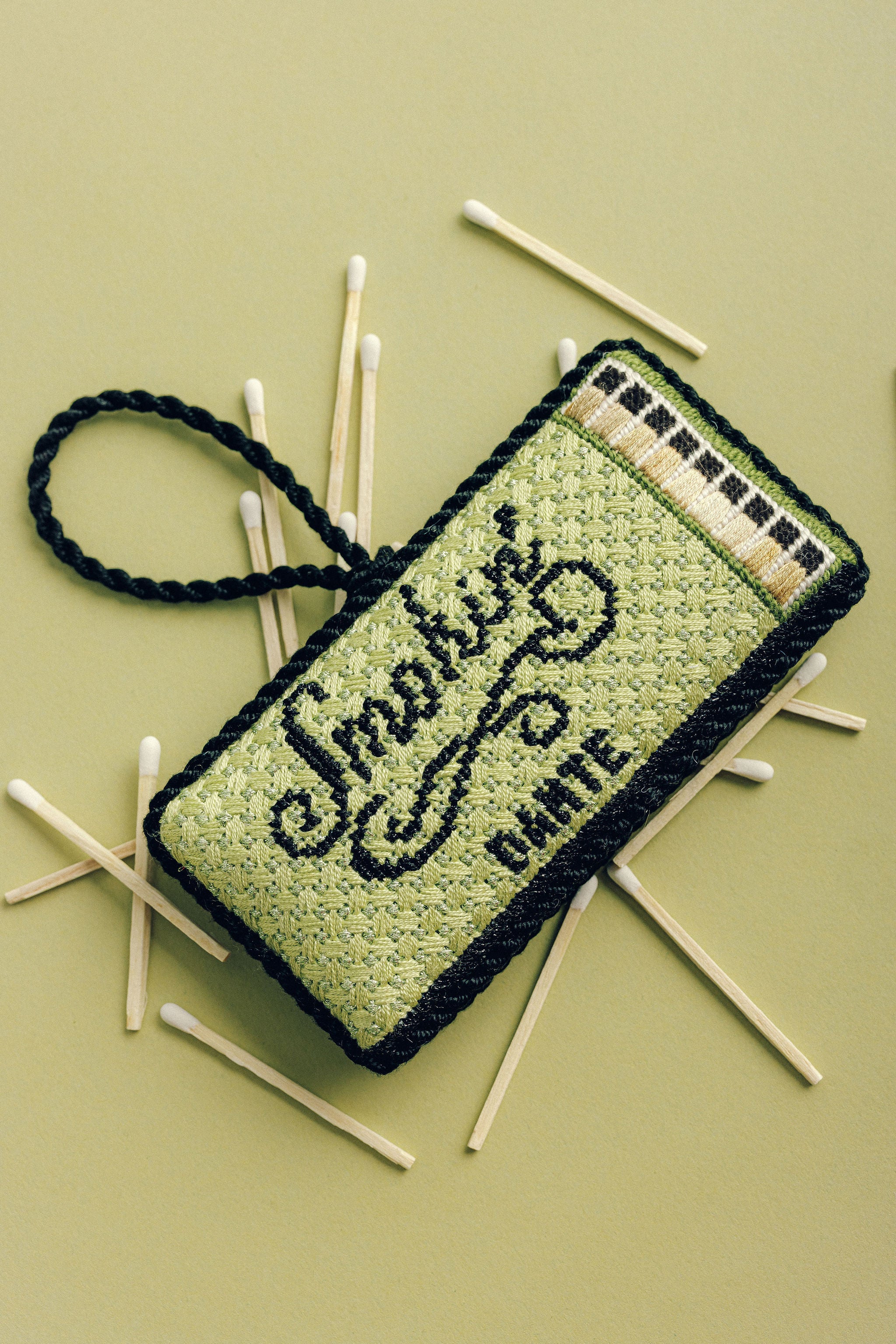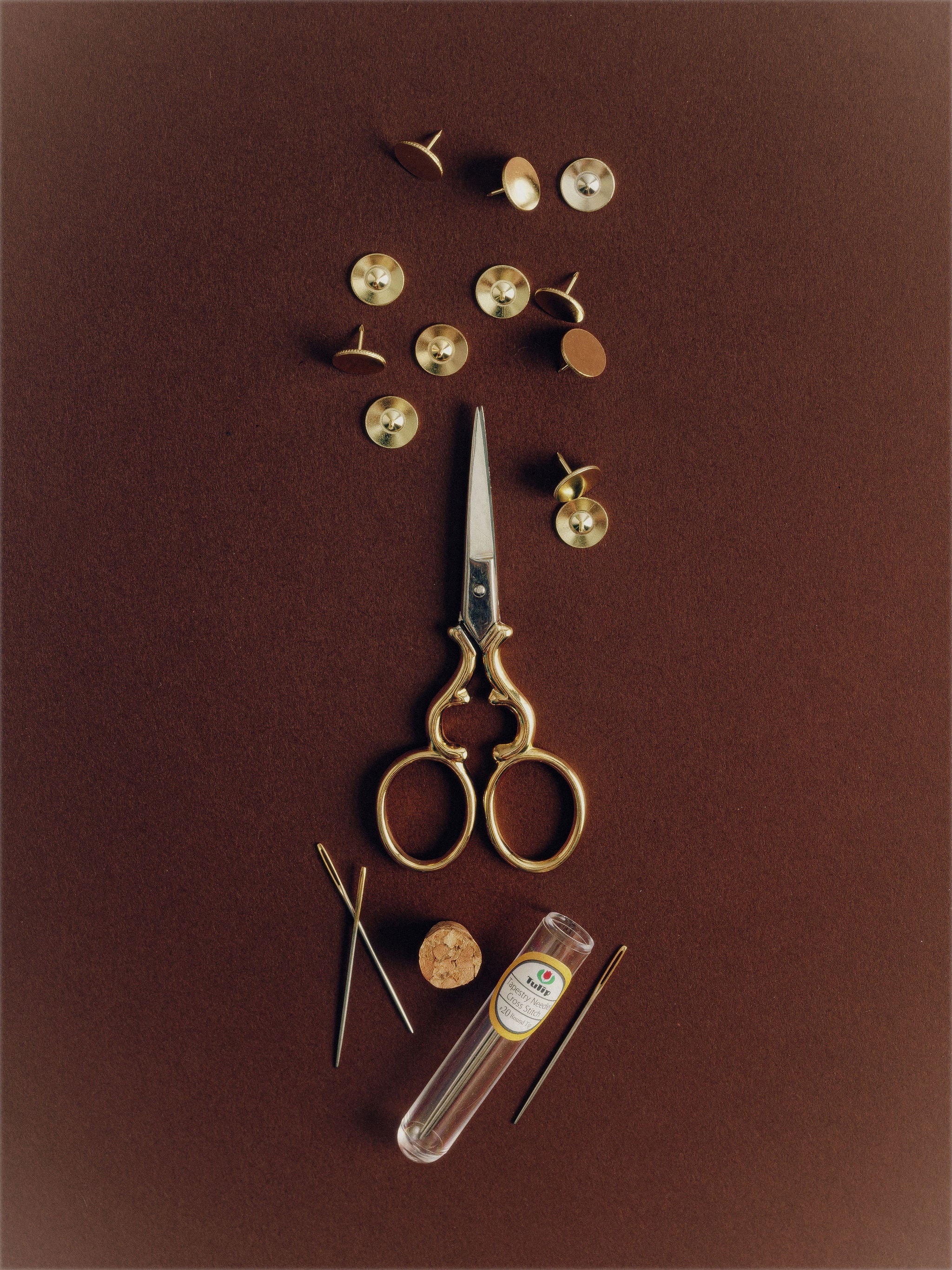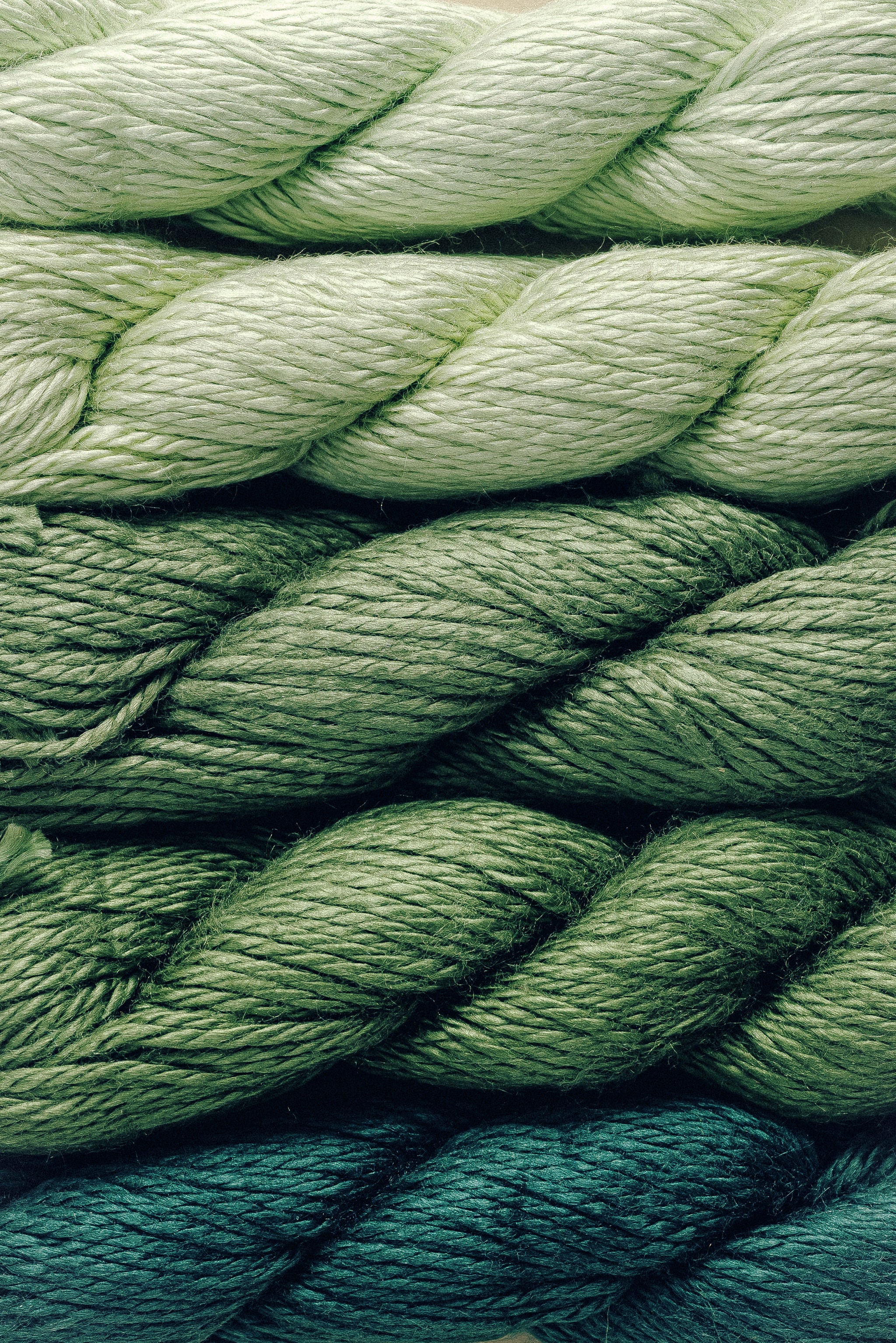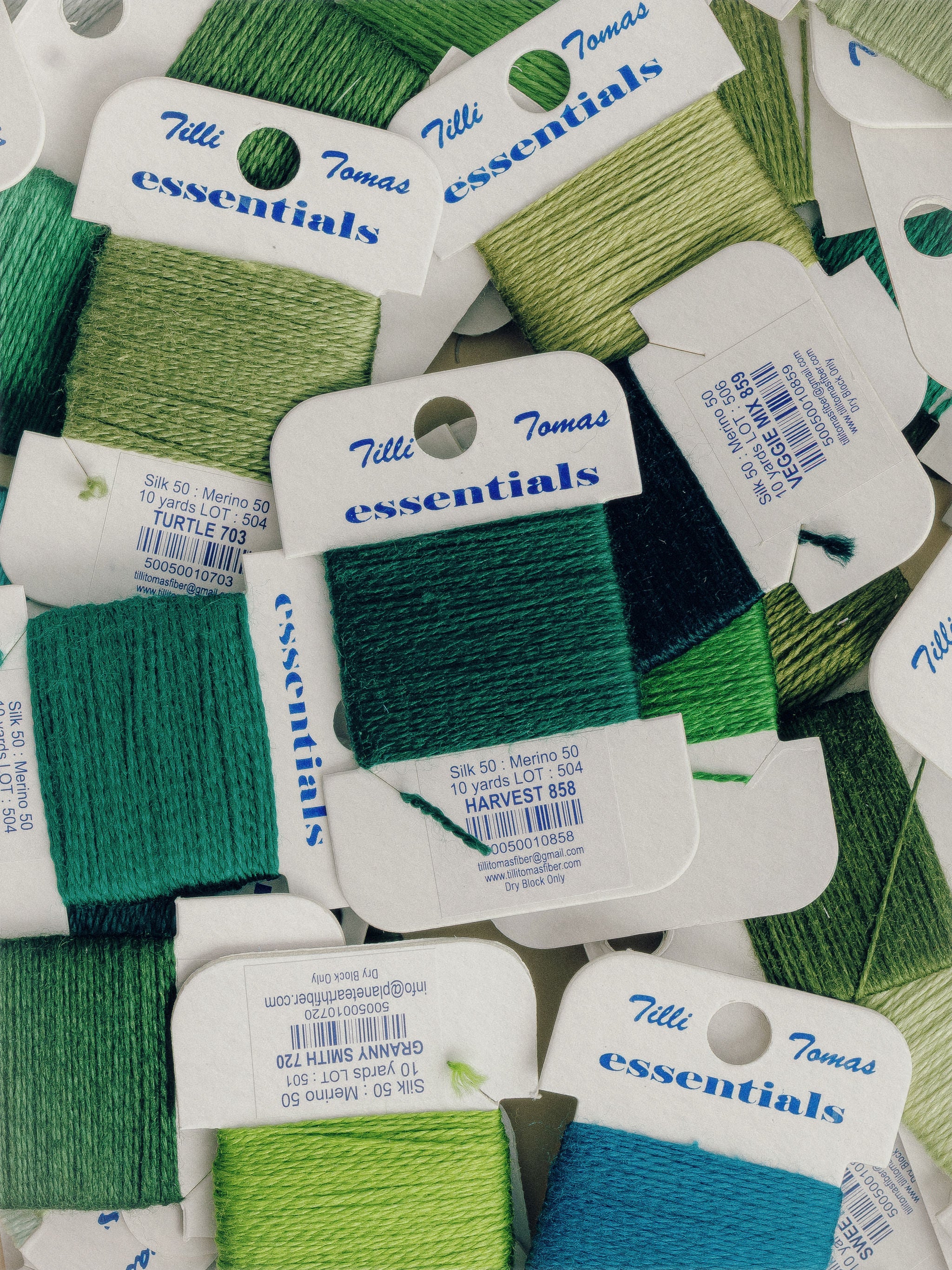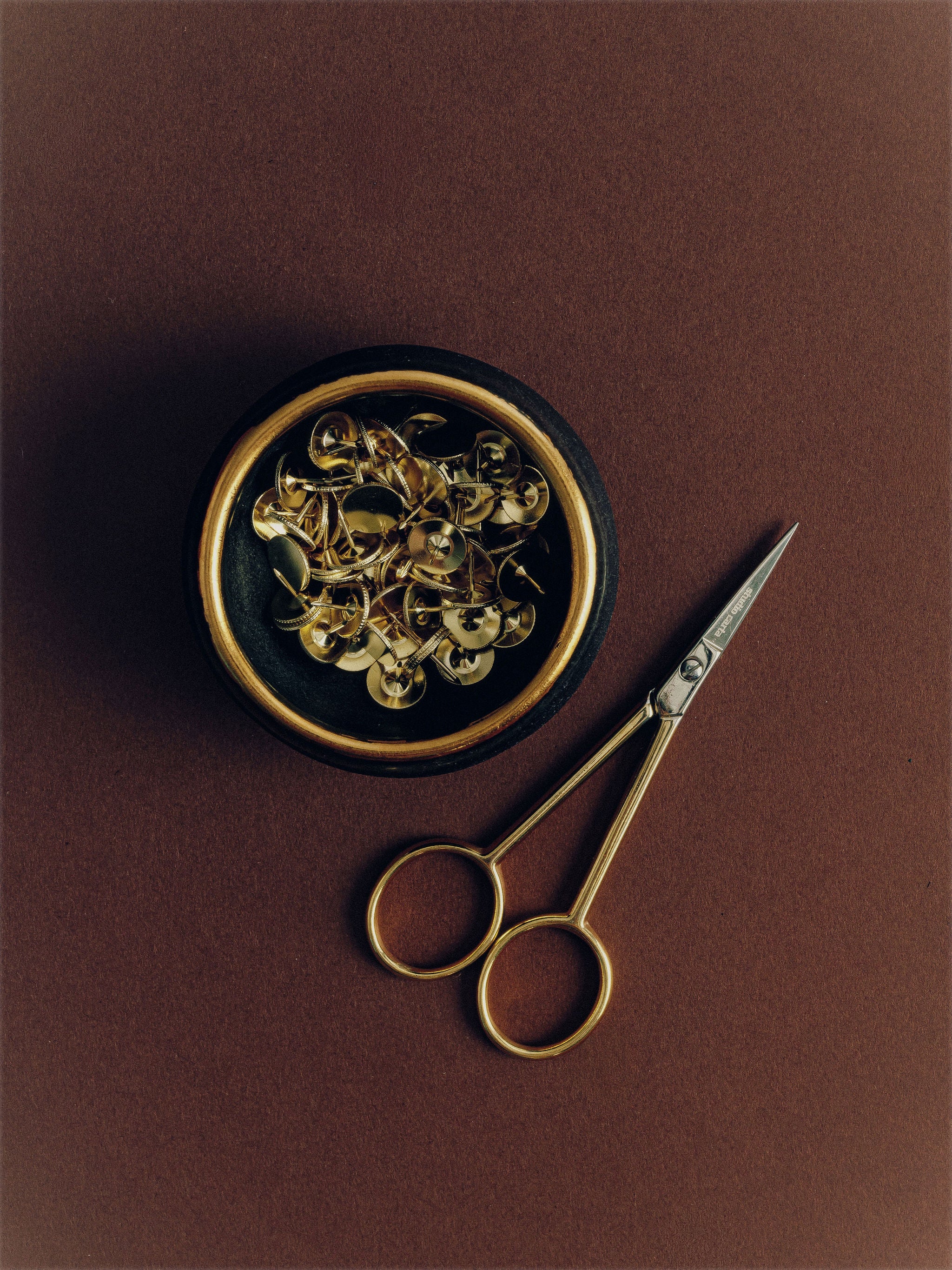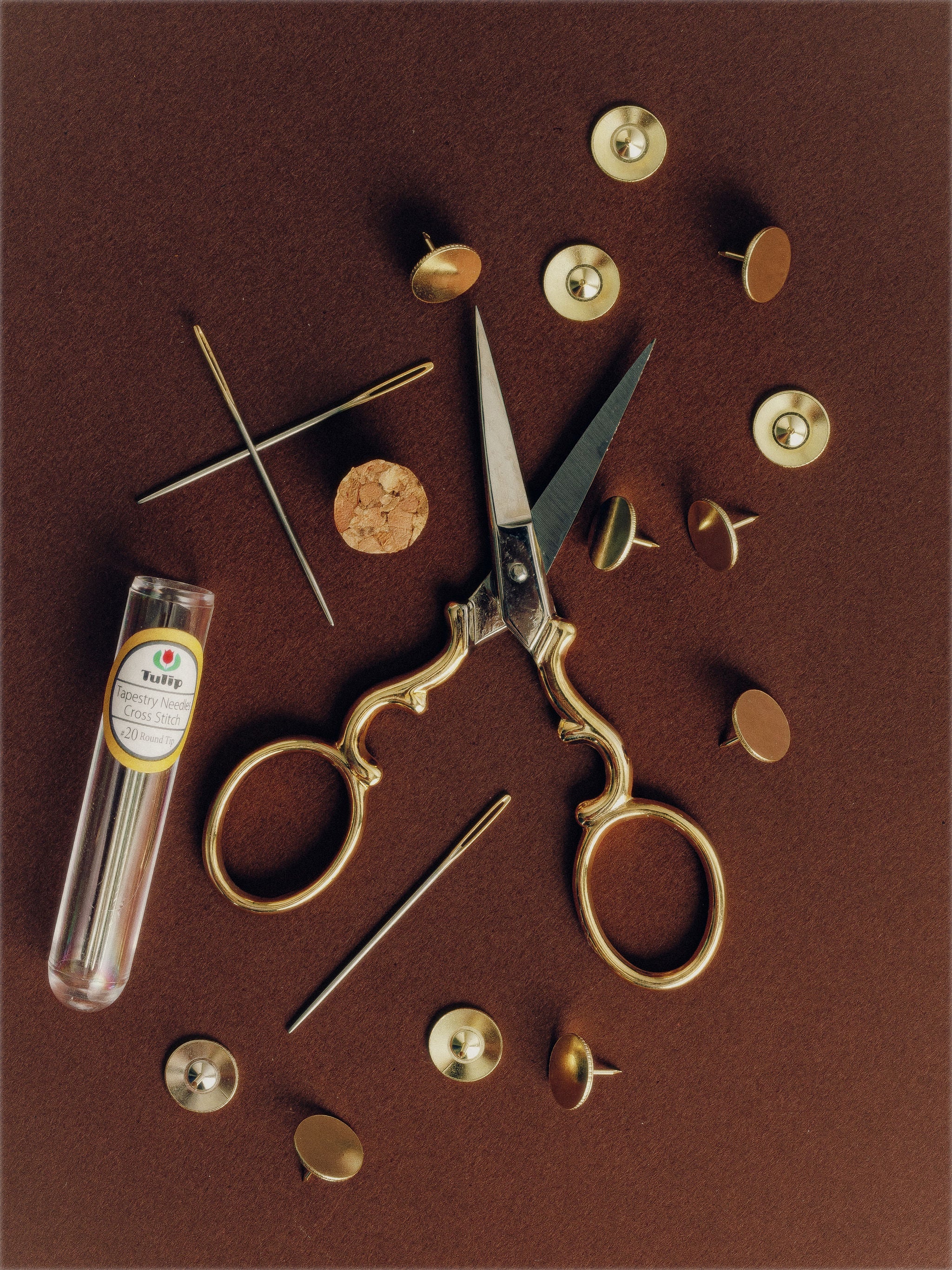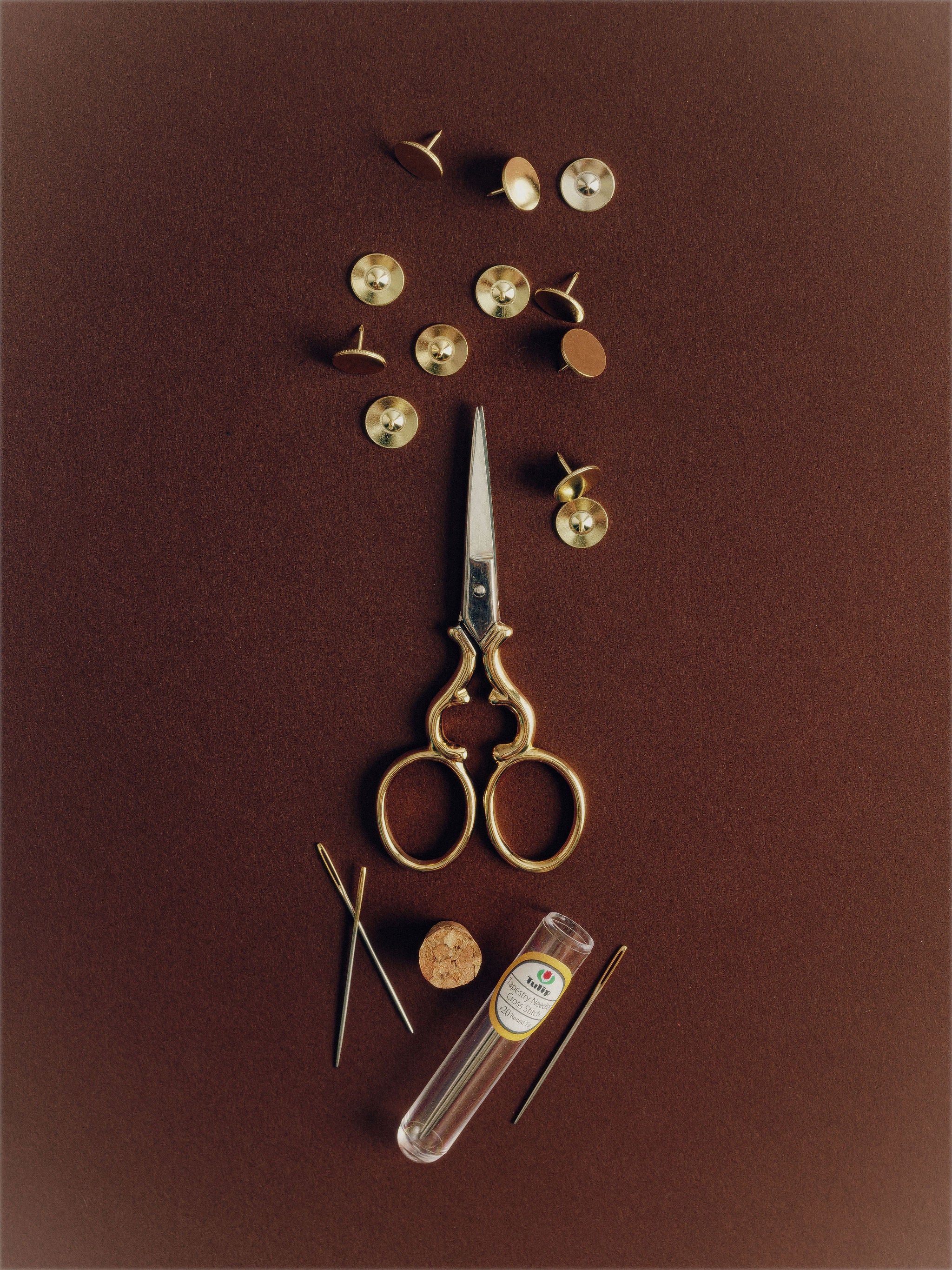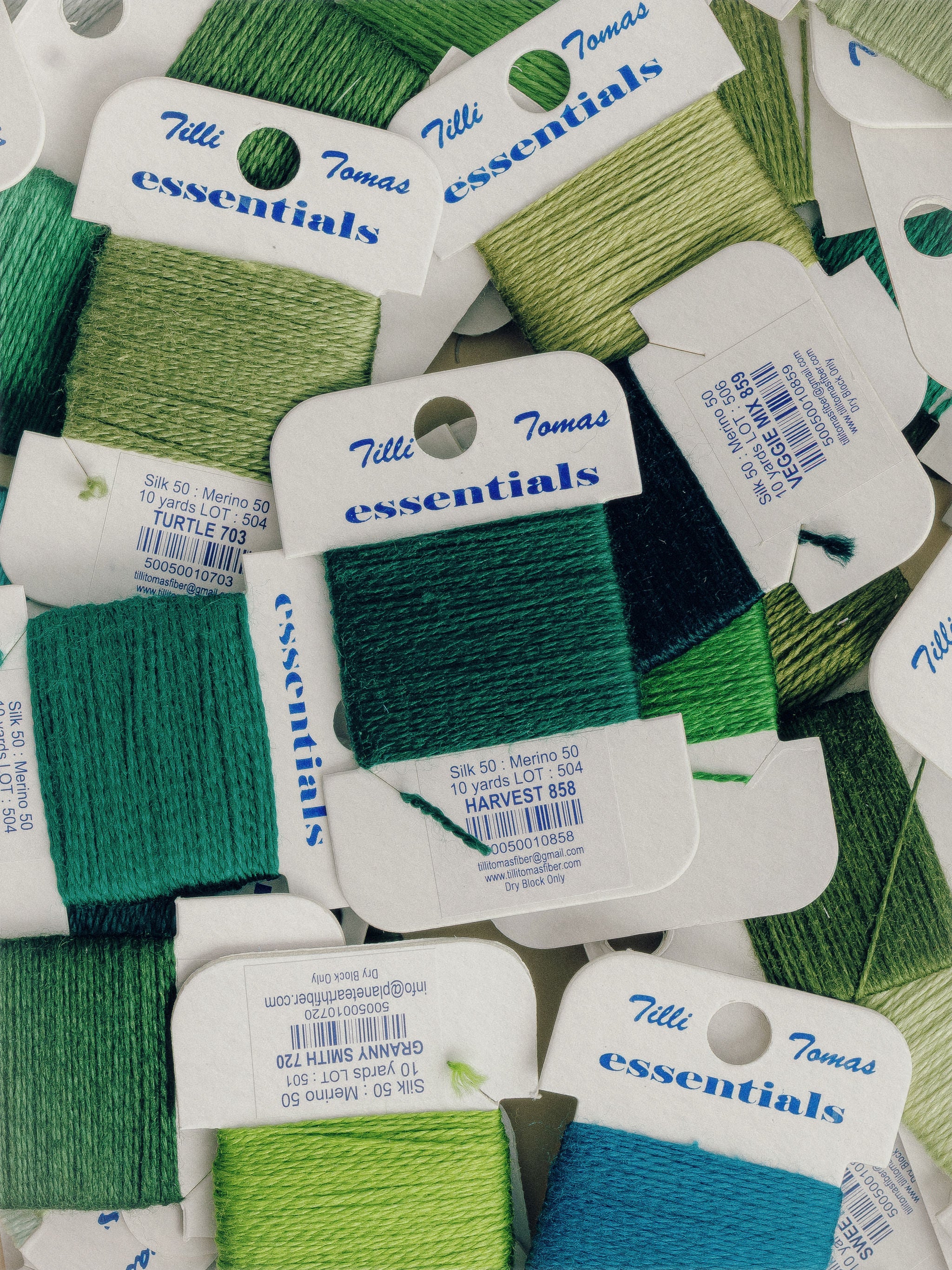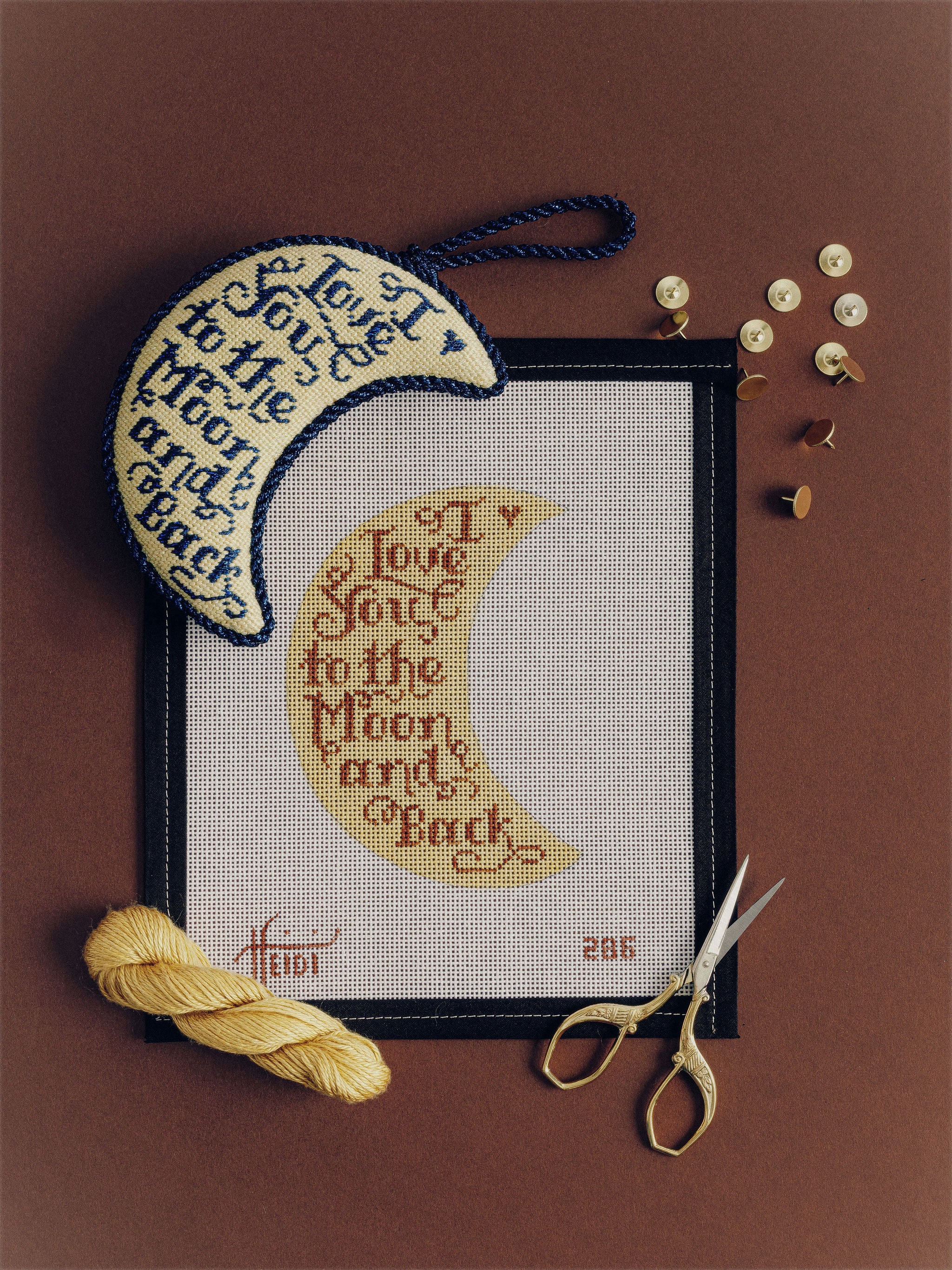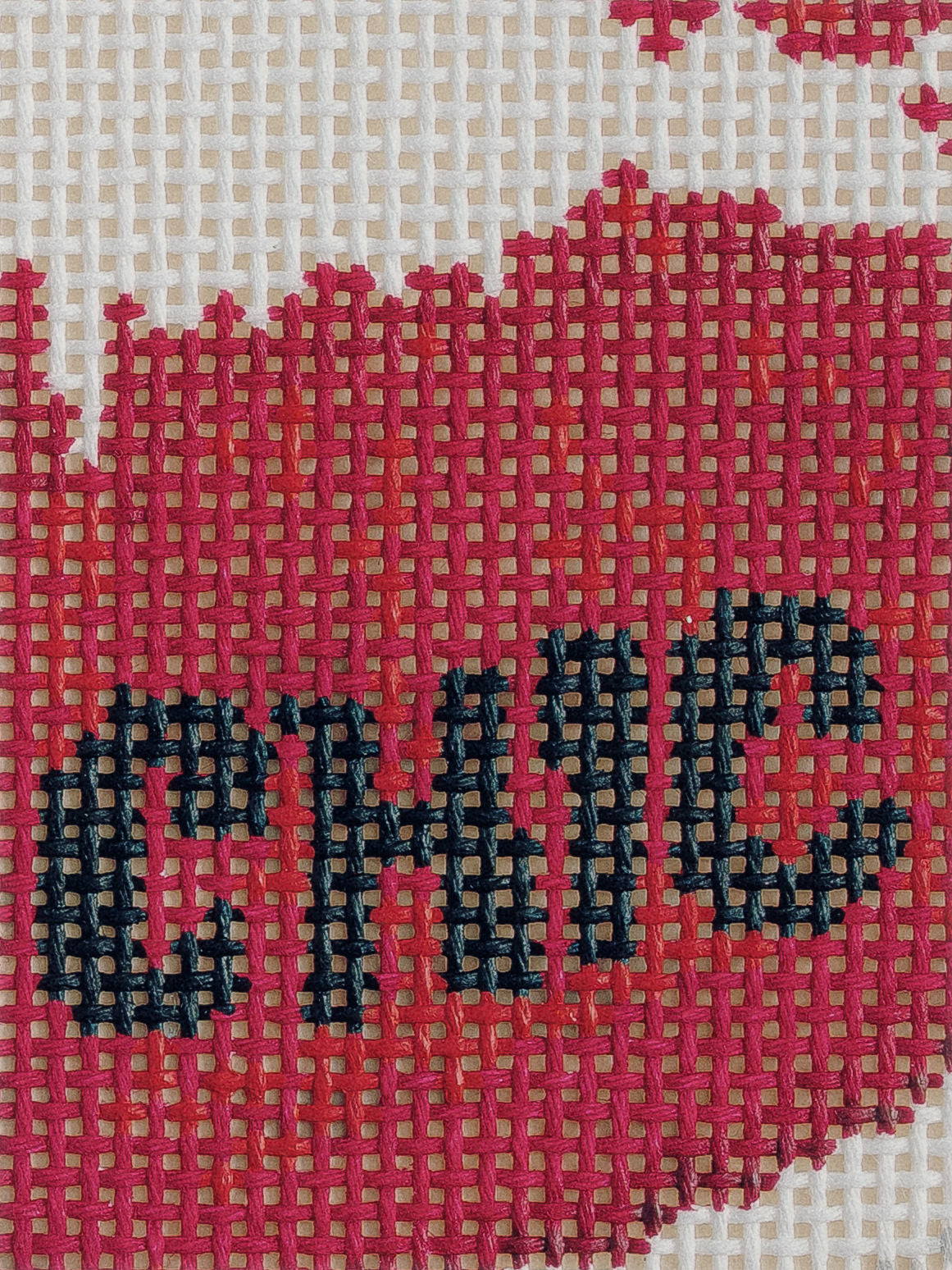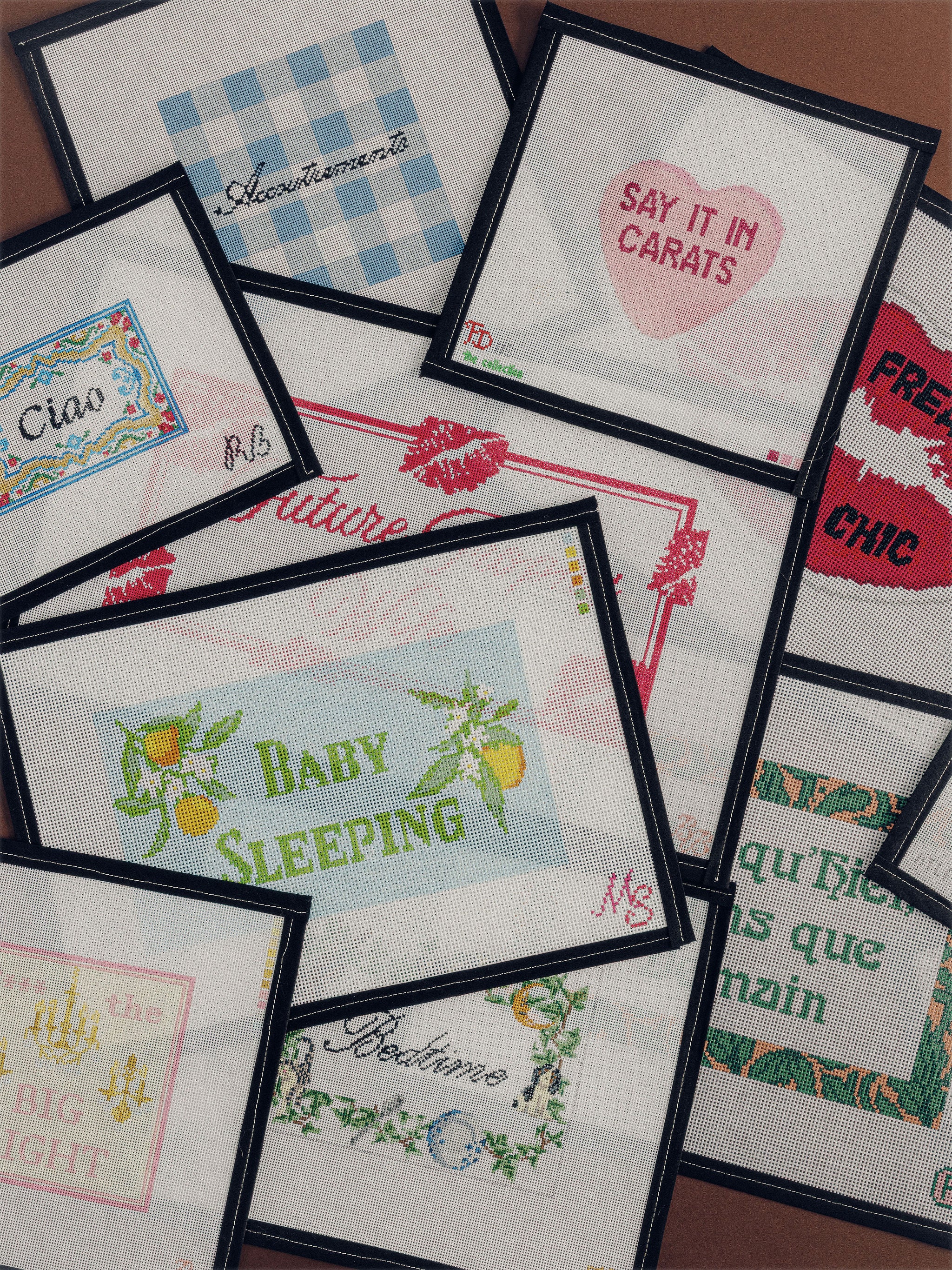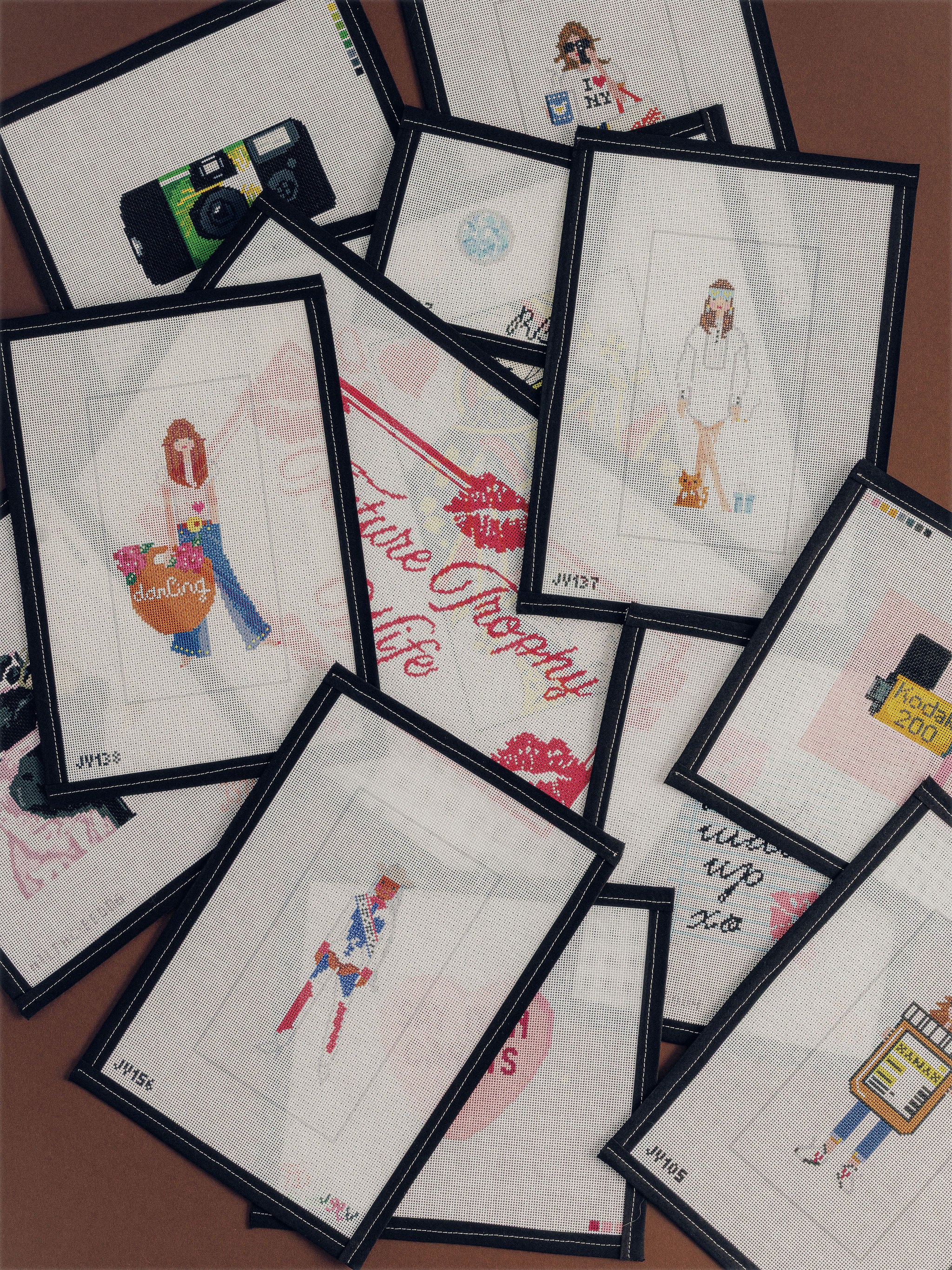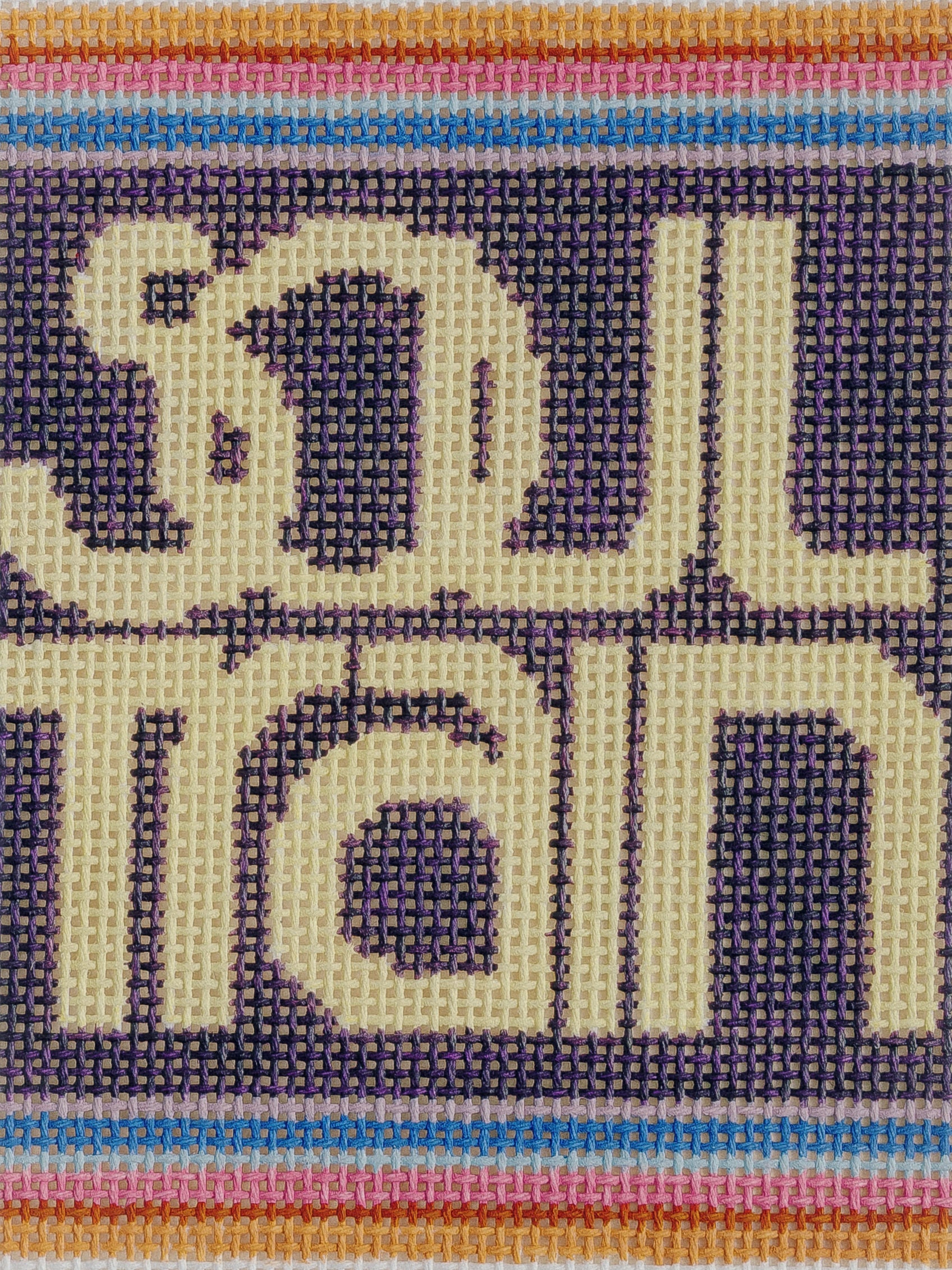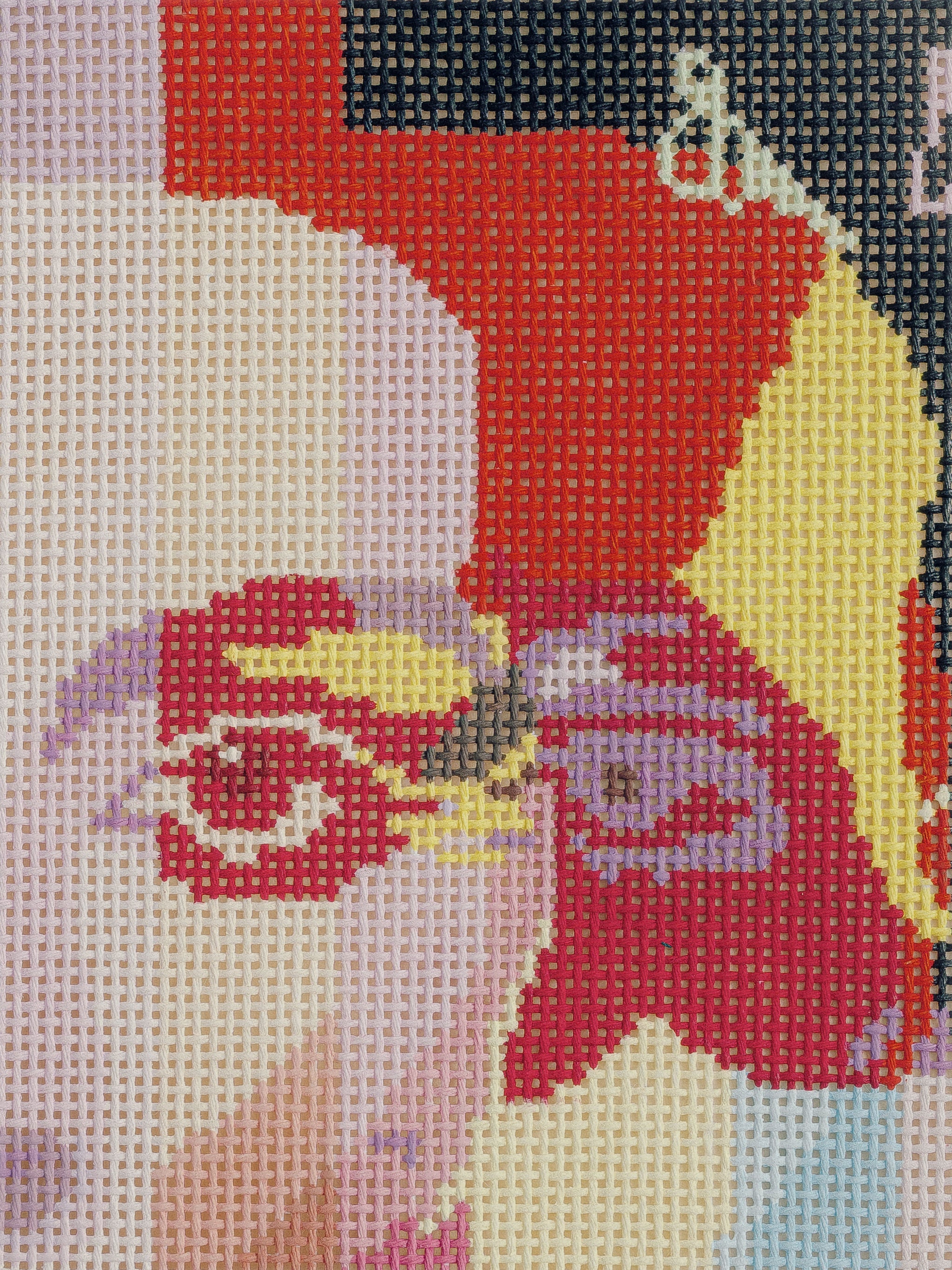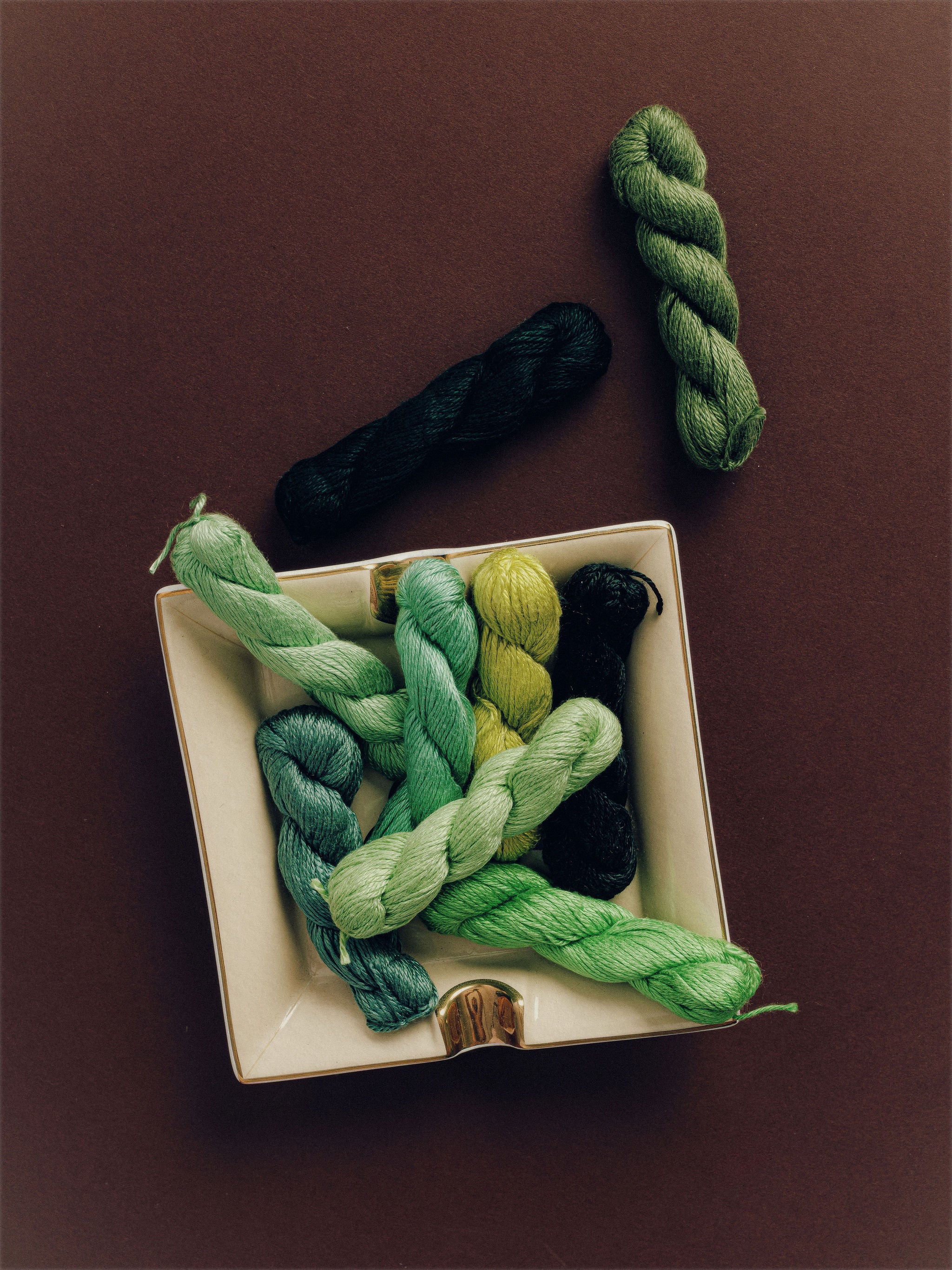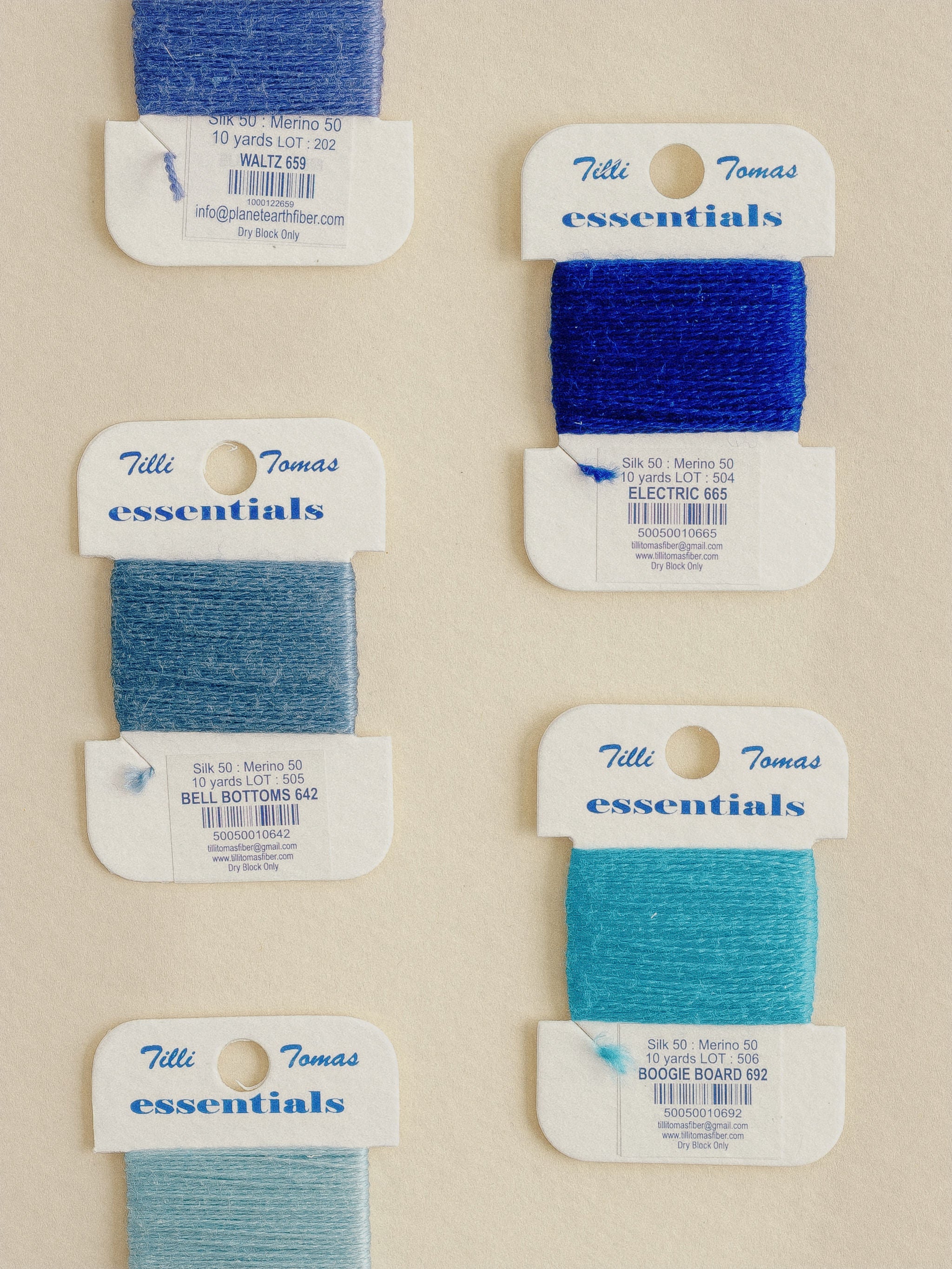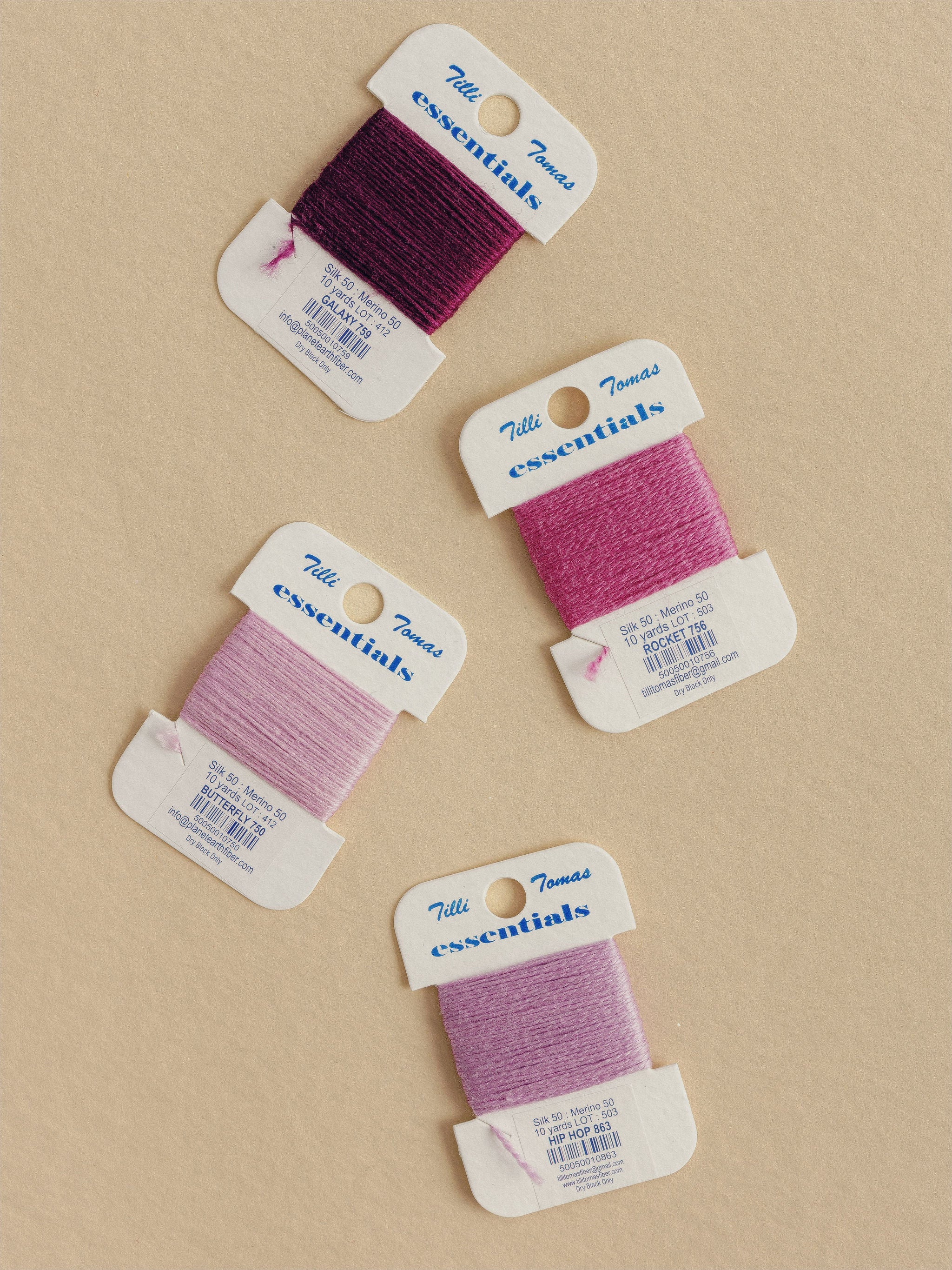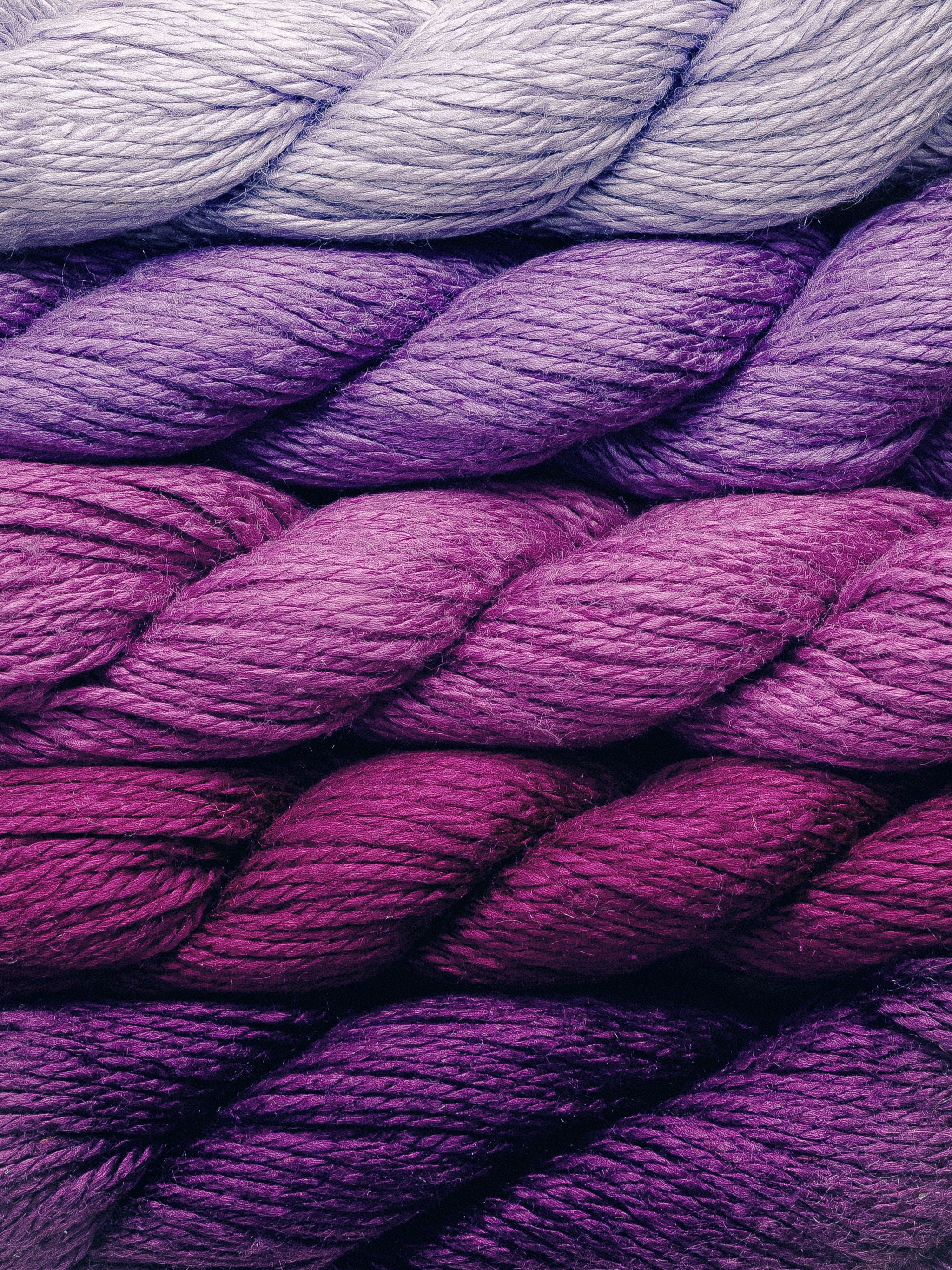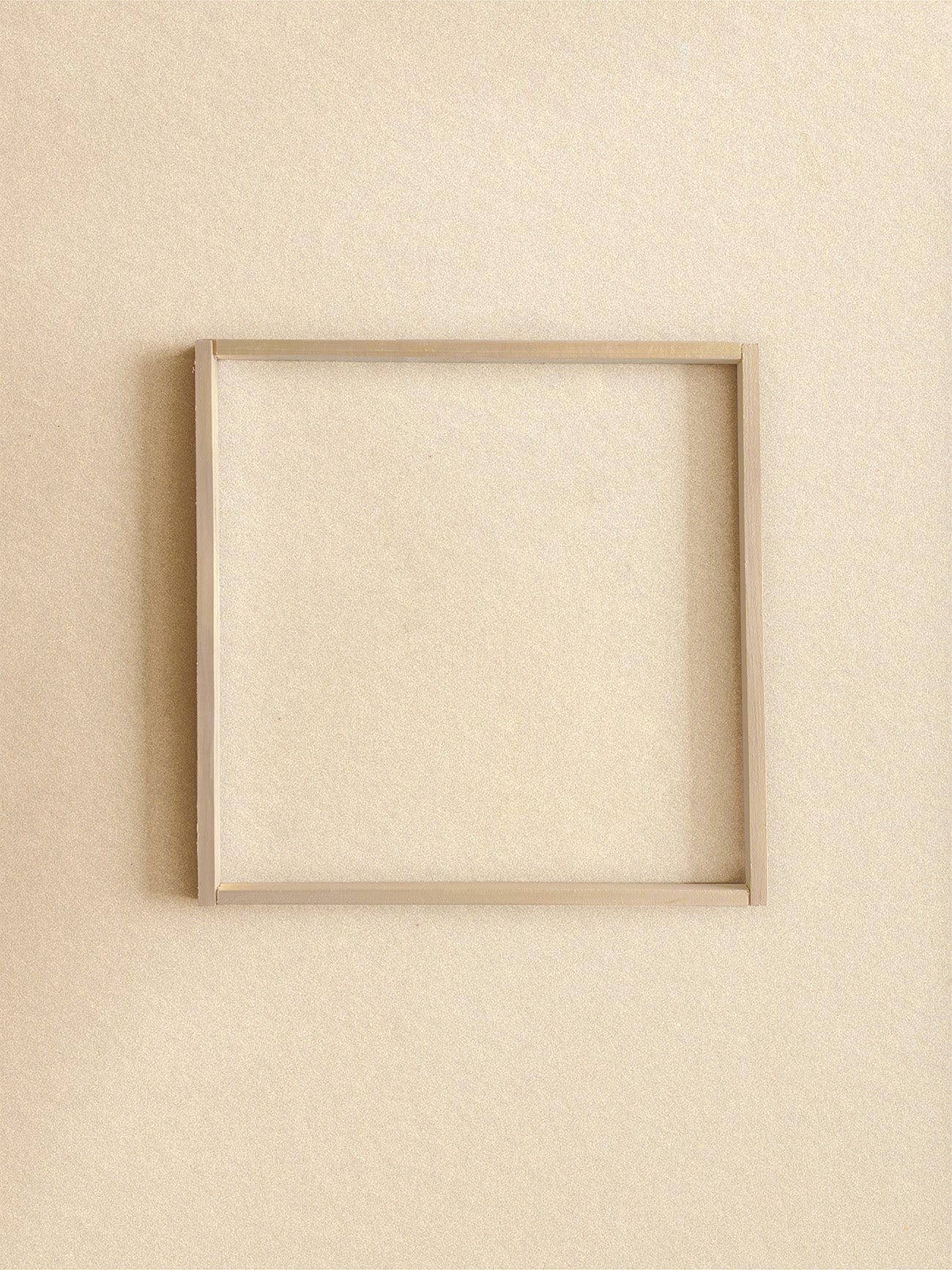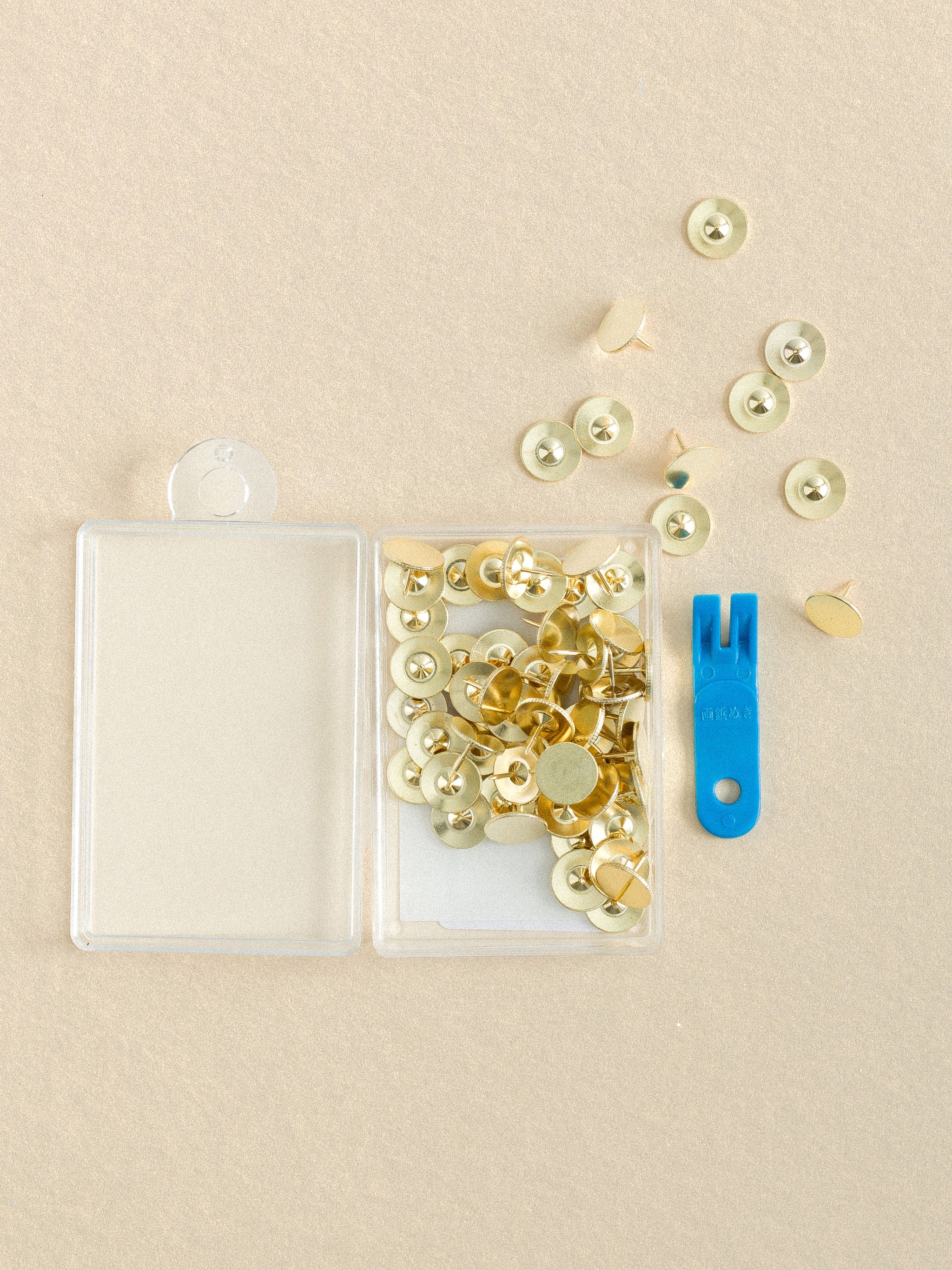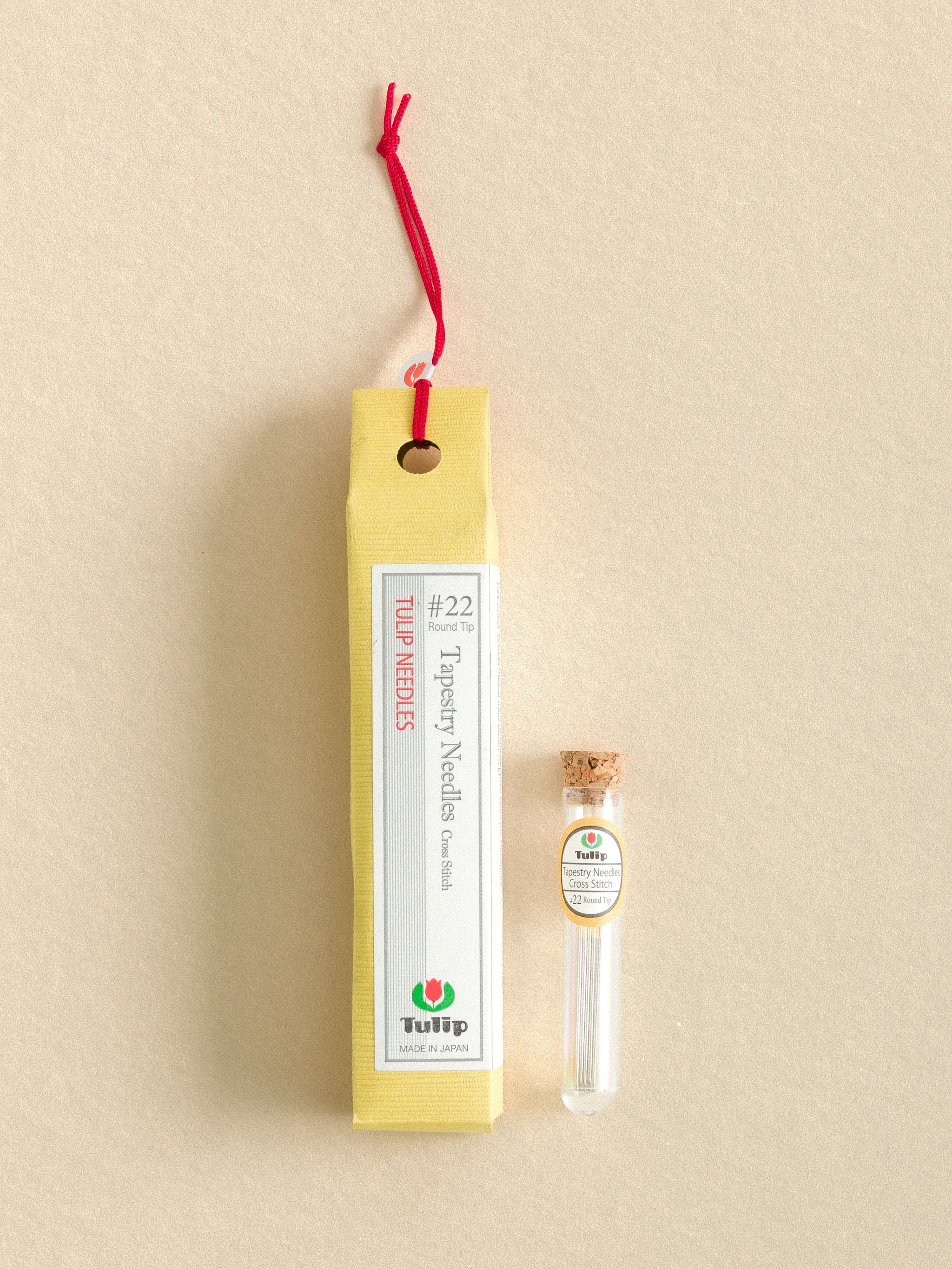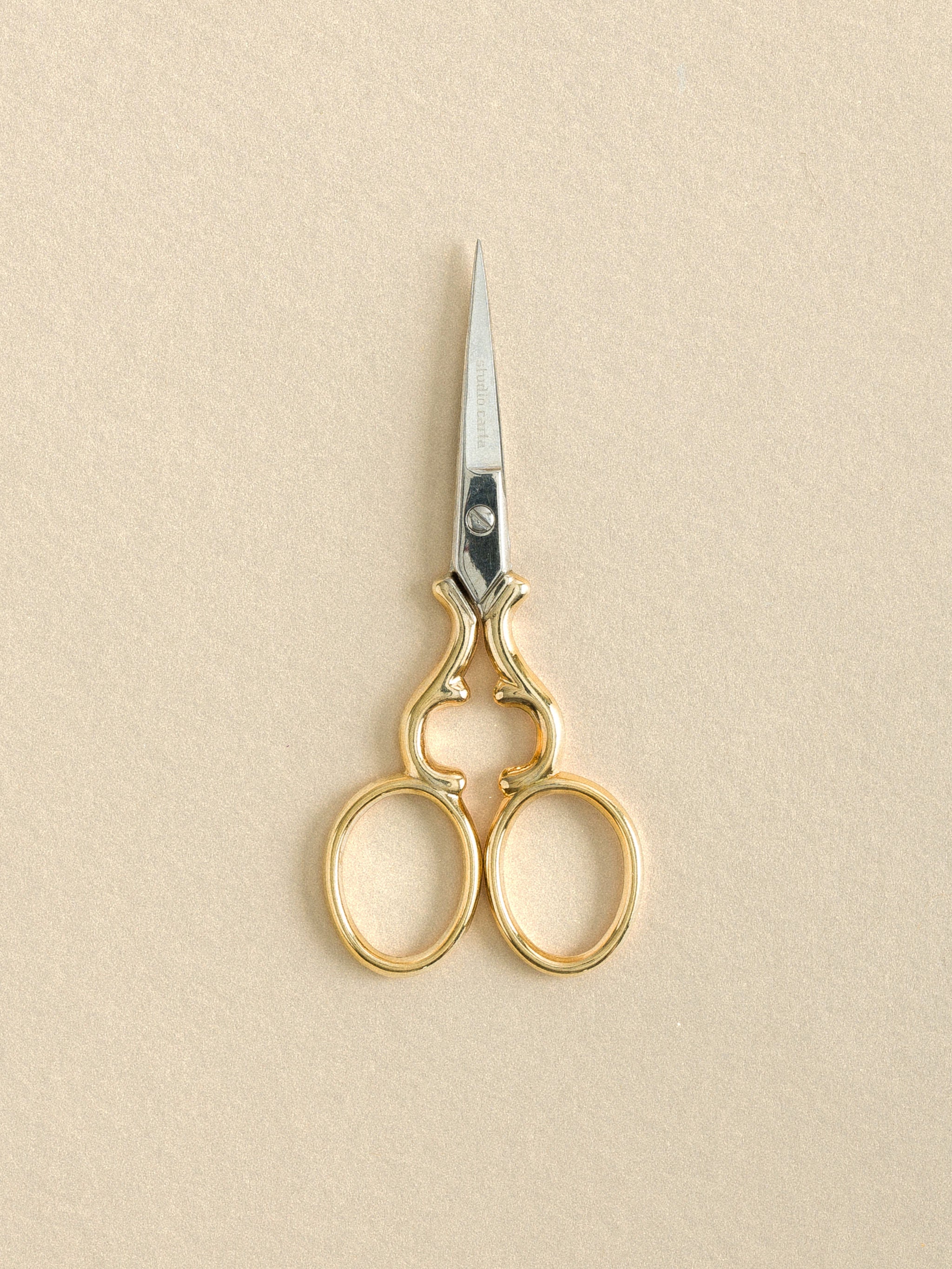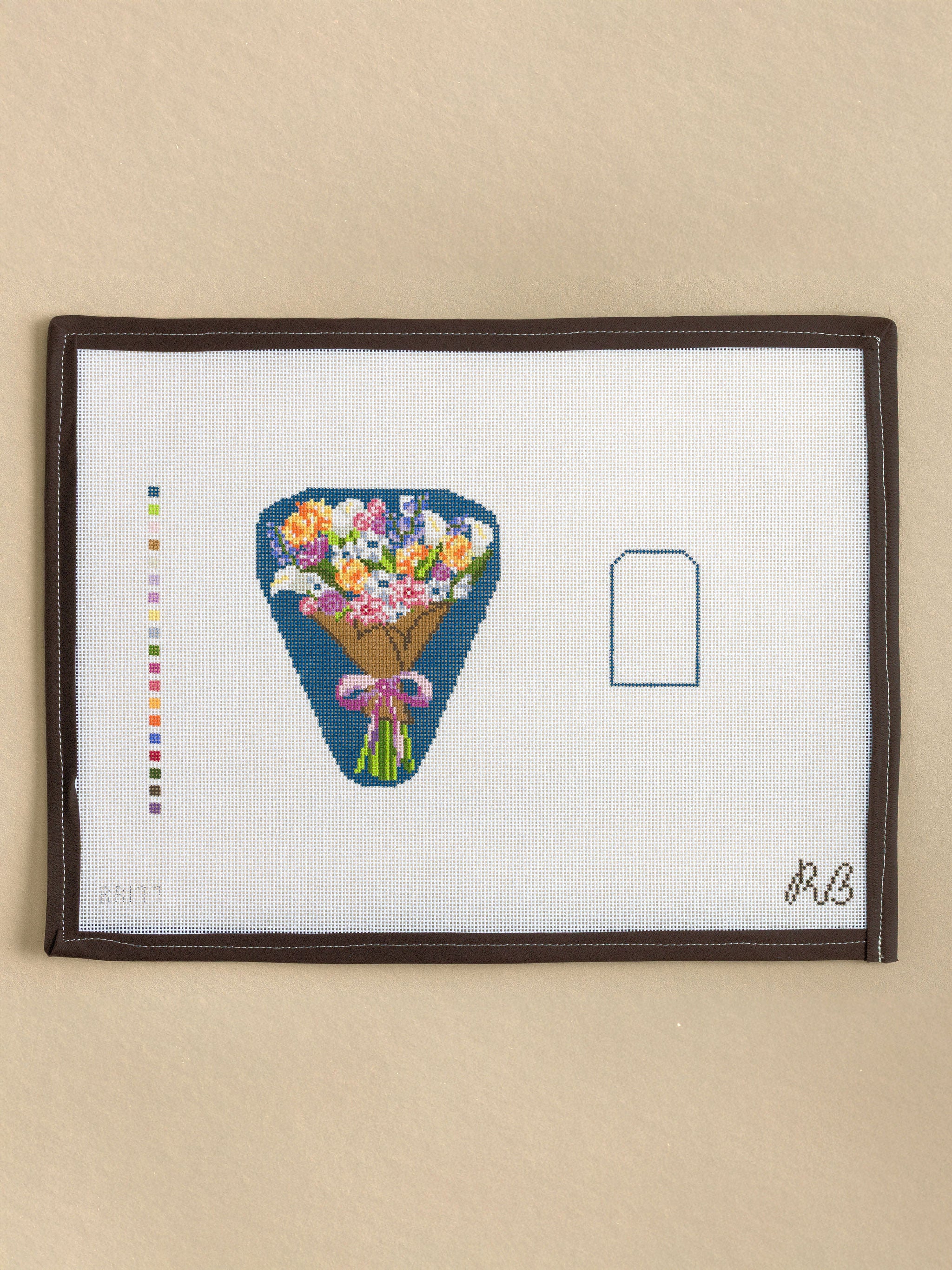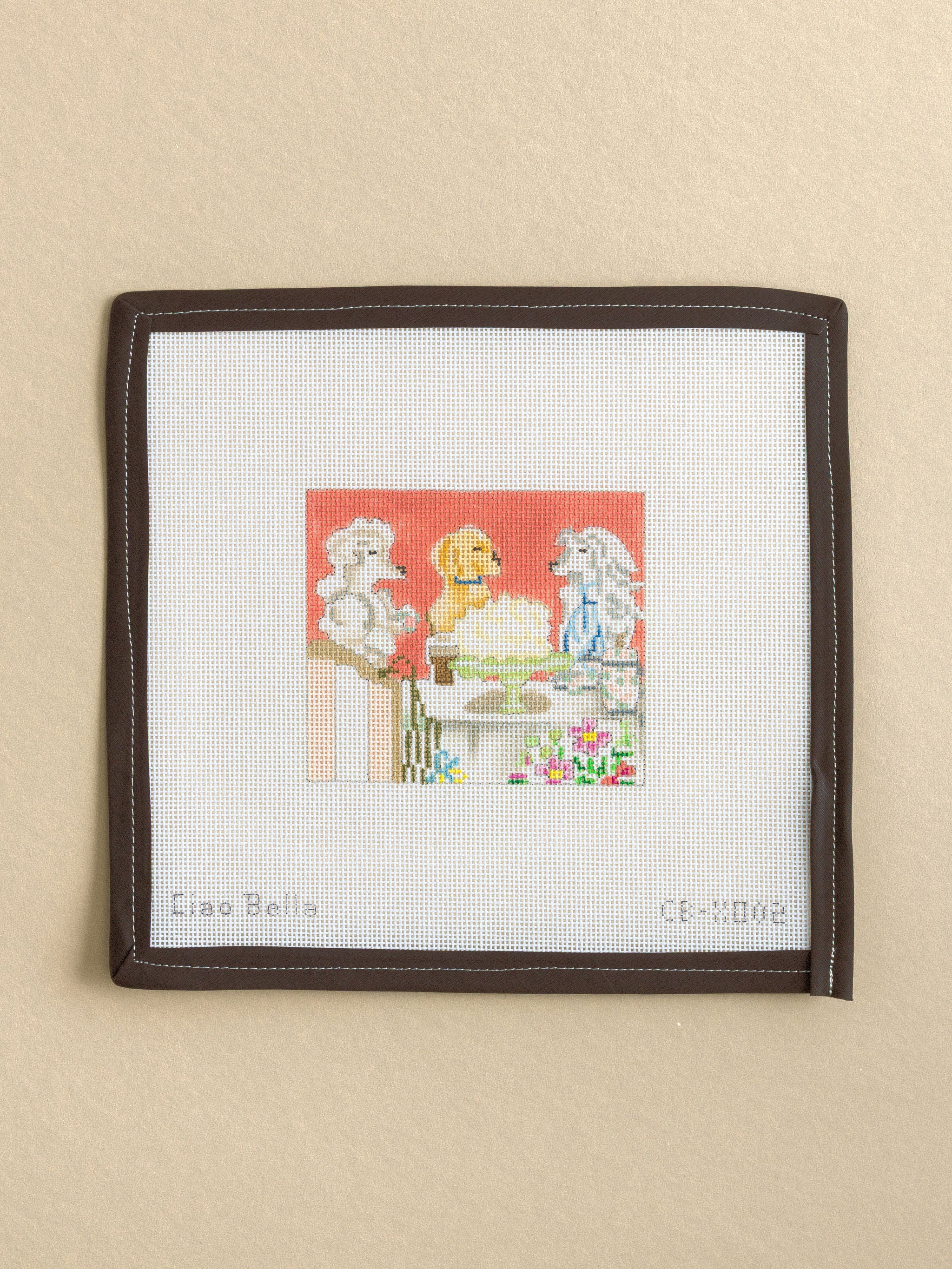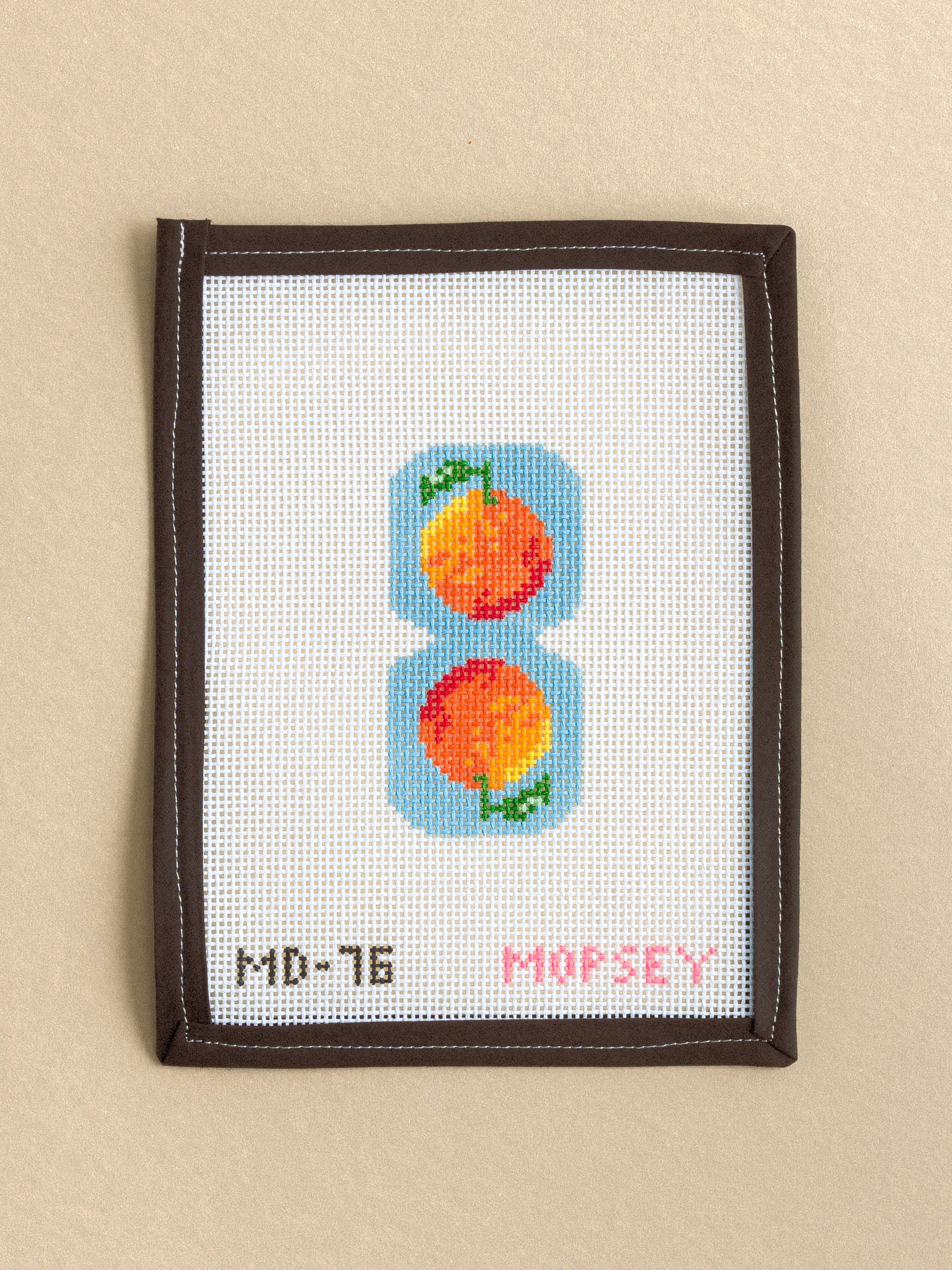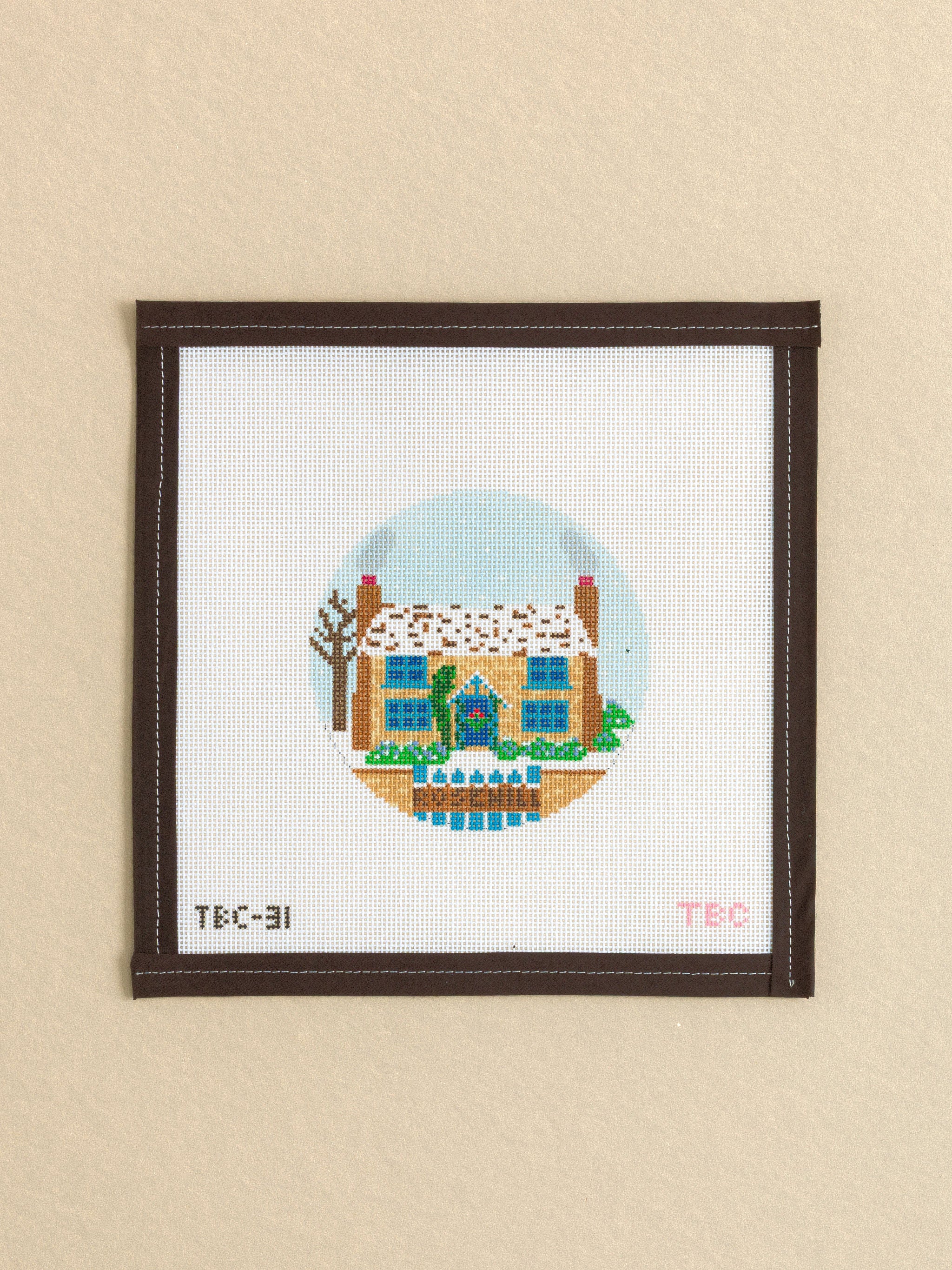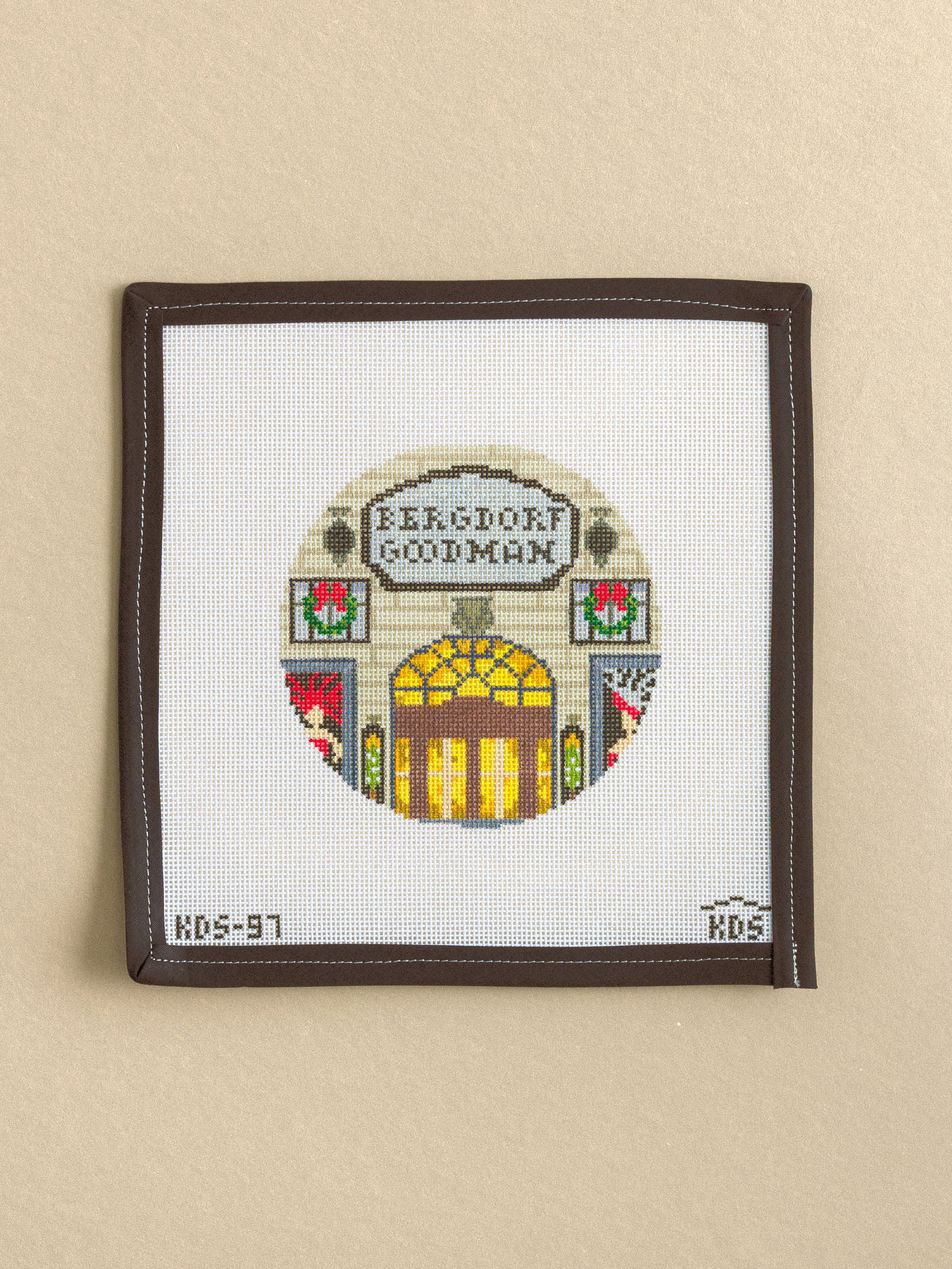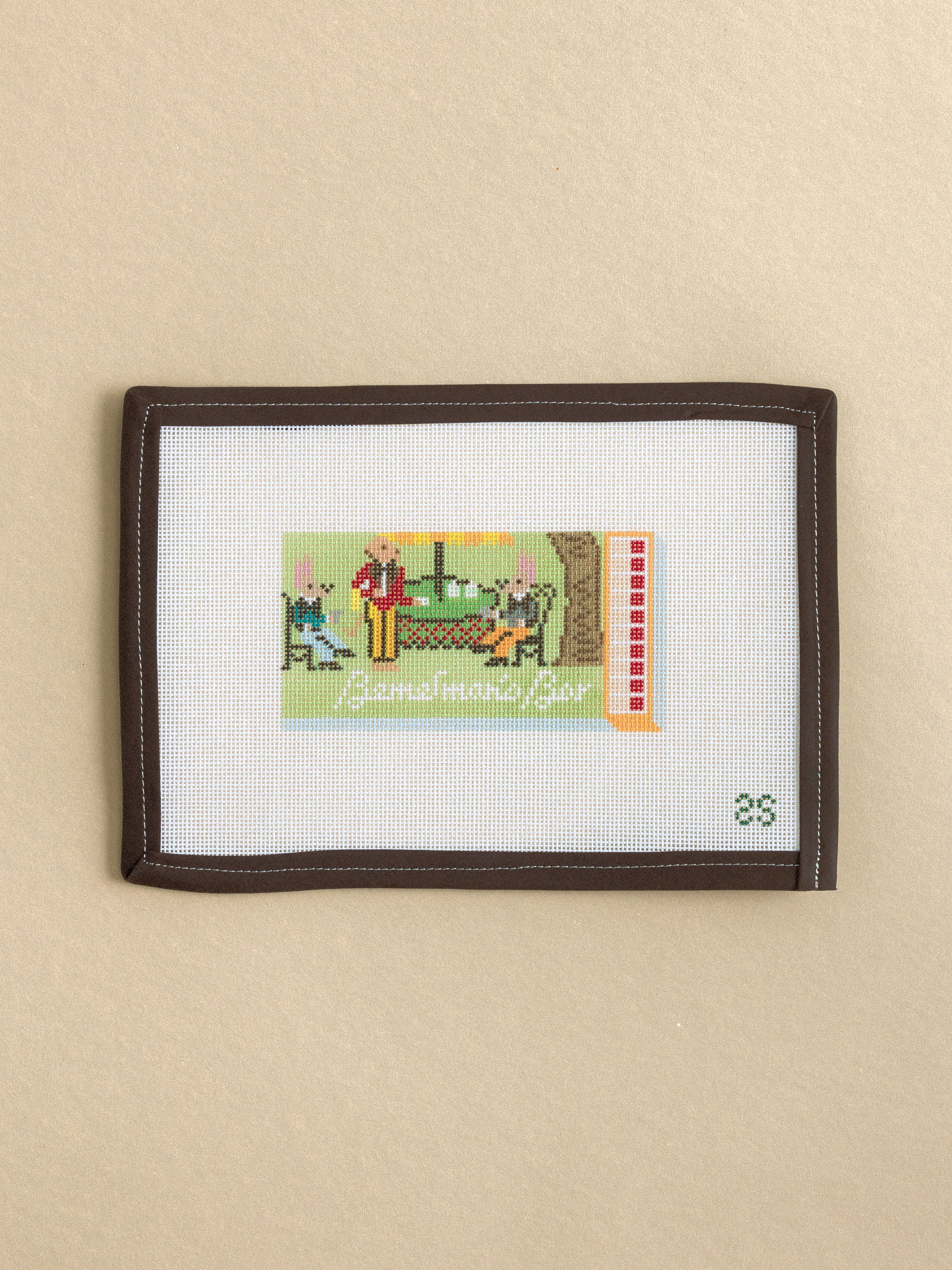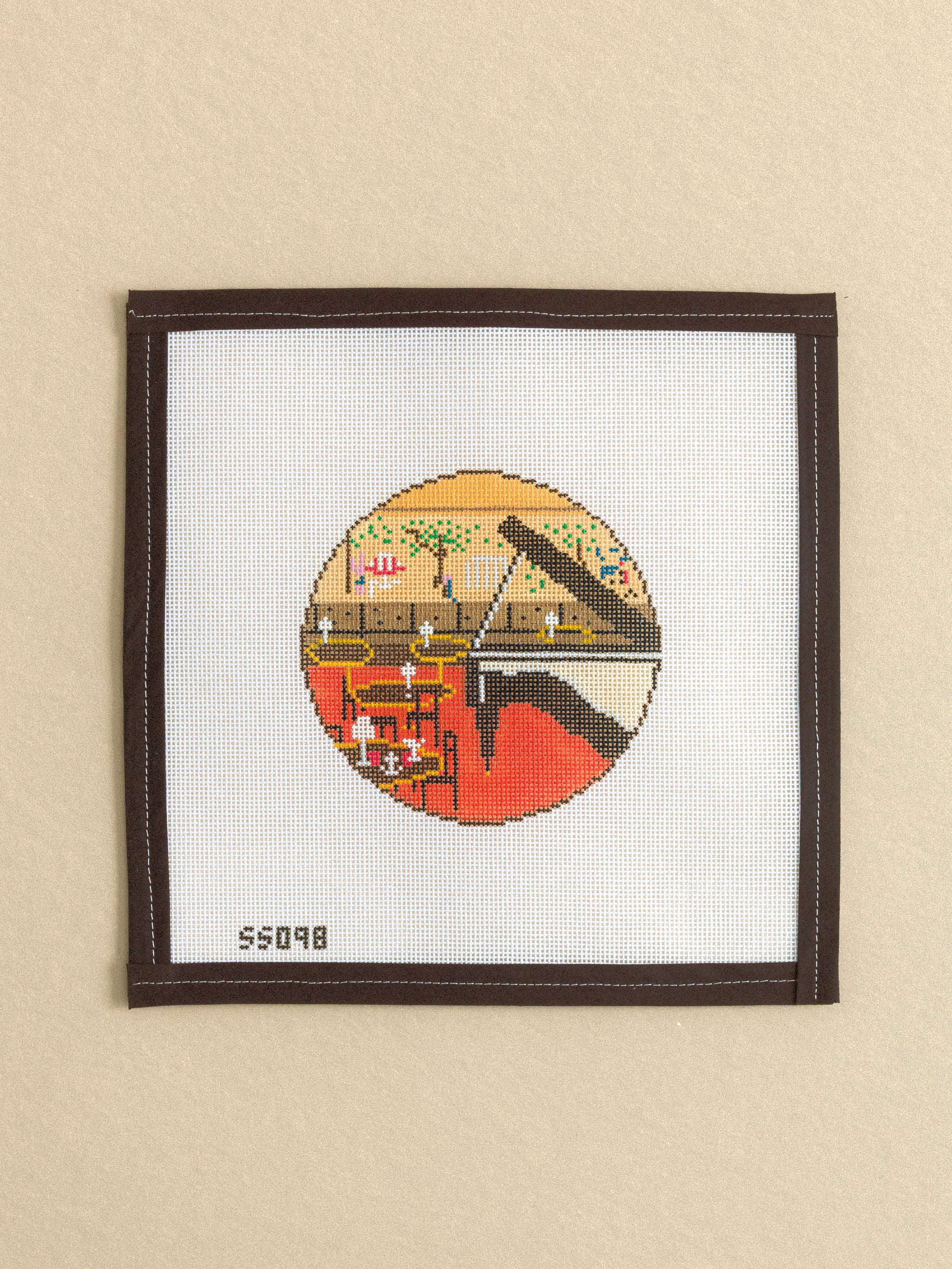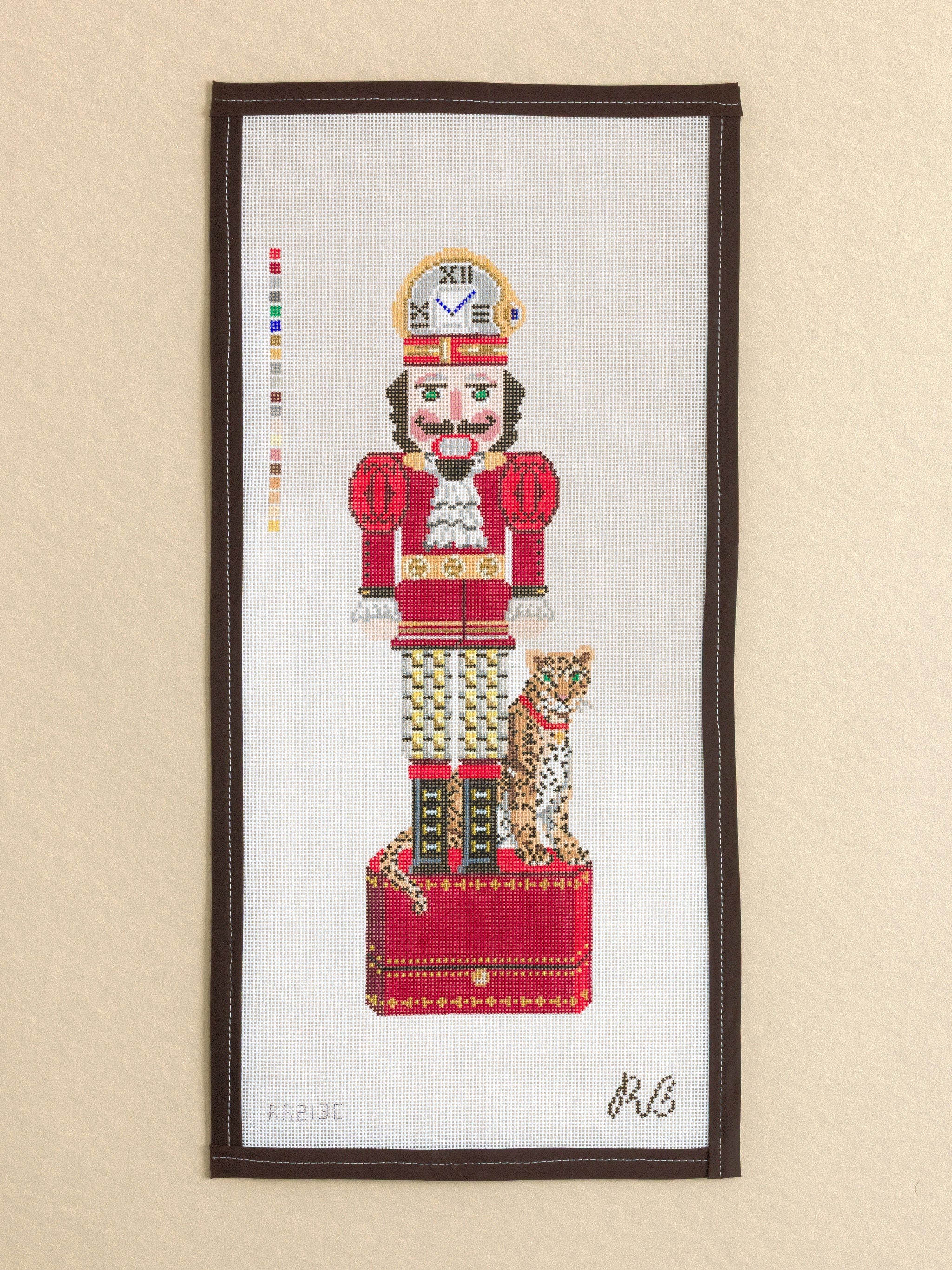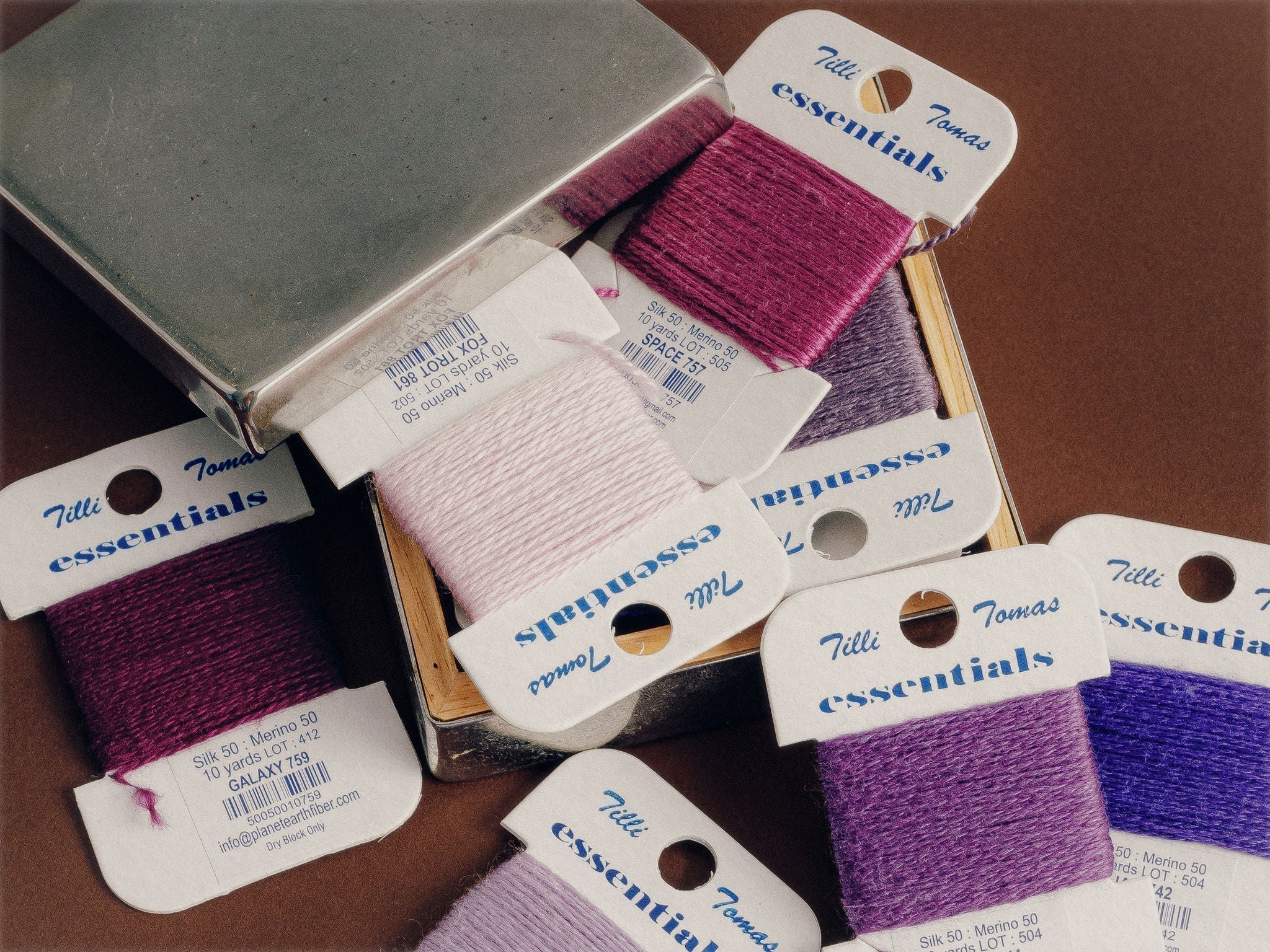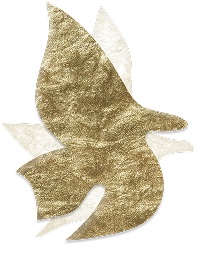Needlepoint is a beautiful fiber art with its own special vocabulary. Whether you're picking up your first canvas or expanding your skills, understanding these terms will help you navigate patterns, tools, and techniques with confidence.

Canvas & Materials
Canvas – The foundation fabric for needlepoint, featuring an open weave that allows for stitching. Made from cotton or linen, the canvas is treated to keep it stiff, which helps hold painted designs.
Mesh Size/Mesh Count – The number of holes per linear inch in the canvas. In the US, 13 mesh (13 holes per inch) and 18 mesh (18 holes per inch) are most common. The larger the mesh number, the smaller the holes and the finer the detail.
Stitch Painted Canvas – A canvas where paint is meticulously applied to each canvas intersection, so there's no guessing where the next stitch goes.
Printed Canvas – A more affordable option where the design is printed rather than hand-painted. May require a bit of interpretation.
Binding – Tape or fabric sewn around the canvas edge to prevent the canvas edges from unraveling.

Canvas Structure
Mesh – The intersection where horizontal and vertical canvas threads cross—this is what you stitch through.
Warp – The canvas threads running lengthwise (from the loom).
Weft – The canvas threads running horizontally, woven with the warp threads.
Selvage – The finished edge of the canvas (the orange striped fabric) that runs parallel to the warp threads and prevents unraveling.

Threads & Fibers
Thread/Fiber – What you stitch with! Common types include cotton, silk, and wool. Specialty threads add extra fun and texture.
Skein – A unit of thread, typically several yards long, wound and twisted for easy storage.
Ply/Plying – The number of strands that make up a thread. Some threads need to be separated or doubled up to work properly on your canvas.
Stripping – Separating multi-ply thread into individual strands to achieve the desired thickness.
Dye Lot – A number identifying each batch of dyed thread. Colors can vary between dye lots, so purchase all the thread you need for large areas at once and check that dye lots match.
 Needles & Tools
Needles & Tools
Tapestry Needle – A blunt-tipped needle with a large eye, used for needlepoint. Size 20 for 13 mesh, size 22 for 18 mesh.
Needle Threader – A handy tool that helps you thread your needle quickly.
Needleminder – A decorative magnet that holds your needle on your canvas when you're not using it. Comes in fun designs!
Laying Tool – A tool used to keep stitches lying smoothly and prevent twisting, creating more even coverage. Used primarily with flat threads (like neon rays, straw silk, and silk ribbon) or pliable threads (like DMC, Splendor, Soie D’alger).

Stitches
Tent Stitches – The "bread and butter" of needlepoint, including three foundational stitches: Half Cross, Continental, and Basketweave. All three look identical from the front but are worked differently and provide different coverage on the back.
Basketweave – One of the three tent stitches, creating a woven basket-like pattern on the back of the canvas. Provides excellent coverage and durability.
Continental Stitch – Another tent stitch, worked horizontally or vertically. Great for filling small sections and working around shapes.
Decorative Stitches – Fancy stitches that add texture, dimension, and personality to your projects. Popular choices include brick, diagonal mosaic and corduroy.
Open Stitches – Stitches that don't completely cover the canvas, creating texture and allowing the background to show through. Great for lacy effects or visual interest.
Bargello – A technique using vertical stitches in a zigzag formation to create chevron-like patterns, popular in the 1970s and usually stitched on blank canvas.
Compensation – When decorative stitches run out of room (especially around lettering), fill in deliberately with shortened versions to make it look intentional. When in doubt, use tent stitch.
Waste Knot/Away Knot – A temporary knot placed on top of the canvas when starting, allowing you to secure the tail without mess. Cut it off once covered by stitches.

Frames & Stitching Methods
Stretcher Bars/Frame – Wooden bars combined to create a frame that keeps your canvas taut while stitching. Helps reduce warping and is especially helpful for decorative stitches.
Frame Tacks – Small tacks used to secure your canvas to stretcher bars.
Scroll Frame – A frame with adjustable rollers that you can tighten, suitable for larger canvases and belts.
Frame Stand – A stand (floor or lap-based) that holds your frame, helpful for very large projects.
In-Hand Stitching – Stitching without a frame, holding the project in your hands.
Scooping – An efficient technique where you weave the needle through the mesh in one motion, completing one stitch while starting the next simultaneously.

Project Planning & Finishing
Kit – Everything you need to stitch a canvas: needle, canvas, and threads.
Stitch Guide – Instructions detailing which stitches and thread colors to use in each area of your design.
Tension – The tightness and evenness of your stitches. Consistent tension makes your finished piece look more polished.
Color Swap – Changing the colors on a canvas to suit your preferences. You can stitch with different colors mentally or paint over the original with acrylic paint.
Blocking – The process of dampening and reshaping your finished canvas to return it to its proper shape before finishing. Essential for a clean, professional result. Be sure to take note whether the threads you are using require dry blocking. You’ll want to tell your finisher so the fiber dyes don’t run and ruin the piece.
Finishing – Transforming your stitched canvas into its final form: ornament, pillow, clutch, belt, keyfob, framed piece, and more! Can be done by Le Fil’s professional finishers or yourself.

Community & Culture
LNS – "Local Needlepoint Shop." Amazing places with walls of canvases and threads, helpful staff, and often group stitch time, events, and classes.
WIP – "Work in Progress." A canvas you've started but haven't finished yet. Don't worry if you have a few!
Stash – Your collection of canvases and threads eagerly waiting their turn!
Frogging/Ripping Out – The process of removing stitches. Named because you "rip it, rip it!" Part of the learning process—don't feel defeated!
Orts – Small leftover pieces of thread from your project. Some stitchers collect them in jars as project mementos.
Breakup Belt – A humorous piece of needlepoint lore: beginning a needlepoint belt before marriage, only to have the belt outlast the relationship!

